#i have a lot of things to say about this video game from 1996!
Explore tagged Tumblr posts
Text
Ranch Story Community Q&A Volume 3: Igusa Matsuyama Returns!
Igusa Matsuyama, the legendary artist behind the Story of Seasons series since the original 1996 game has once again agreed to a Q&A featuring questions from fans from around the world! A big thank you to all the members of the community who helped make this possible.
Some aspects of the text have been altered to match localization people are familiar with. (Japanese names to English names, for example: Bokujou Monogatari (牧場物語) was formerly localized as Harvest Moon and is now localized as Story of Seasons, etc). Images were not part of the original text and have been added as a visual aid. Though we translated as many questions as we could, we did not include questions involving personal information or regarding unannounced releases. Please understand.
If you would like to read our original correspondence (in Japanese), that will be provided in a separate post.
Additional cosplay photo provided by Foxface from our community Discord.
Translations: @artycharmy (correspondence, outline) Editing and Clean-up: Jerome, @artycharmy, and @regularcelery
——— Anonymous asks: What is the relationship between Jamie and the Harvest Goddess?
Igusa Matsuyama: Jamie was treated as a fairy or spirit. I'm sorry, but I'm not sure if there's any points that link them and the Goddess.
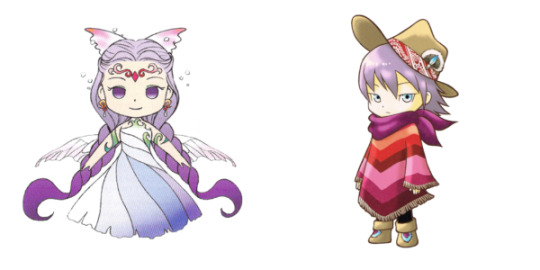
Editor's note: the term Matsuyama uses is "妖精."
Tomato asks: I would like to ask about what their inspiration was for the outfits designs in the original release of harvest moon another wonderful life. Since I got reminded of the girl clothing brand Mezzo Piano when looking at the I love Kuma/I love bears outfit.
Igusa Matsuyama: I remember the only thing I thought of was using Spring-like colours! (All designs were made with seasonal colours In mind) When I knew that Daachan, who was planned to be used in a lot of events, wouldn't actually play a big role in the game, I put him on the T-Shirt so he could at least get some attention as a mascot-like existence.
Pansy asks: If you were able to create your own game for the Story of Seasons franchise, with no rules or limitations whatsoever, what do you think it might look like?
Igusa Mastuyama: Since I love dogs, I'd like to try making a Story of Seasons that's set in a world just full of dogs. Though that dream of mine probably won't come true.
Anonymous asks: The look of Story of Seasons has changed a lot over the years! What would you say is more challenging to create - simple designs, where you have to work with very little space, or complicated designs, where you have to consider many little details?
Igusa Matsuyama: A long time ago there were a lot of things you weren't able to replicate in video games. There were constraints for things like the number of colours and patterns for hair styles and clothes. It was difficult to work around those constraints, but at the same time a lot of fun. Nowadays, it's the complete opposite. Now we can design anything with hardly any constraints. And unlike a long time ago, now I'm asked to make more complicated designs, like patterns and decorations. However, if it's a big request, sometimes I run into quite a lot of trouble when designing. They each have had their own difficulties.
Anonymous asks: Hello, Matsuyama! Thank you for bringing the worlds of Bokujou Monogatari to life for many years. Your art has had a huge influence on me!
One of my favorite candidates is “Rock” from “A Wonderful Life.” I’d love to know any particular influences for his character design from 21 years ago, and his new design for the remake.
Igusa Matsuyama: I was told that he was a young, wannabe playboy, so I somehow ended up with that sort of design. For the remake, I made his clothes a little looser without changing his design, so he'd look even more playful. I, too, wanted to avoid changing him as much as I could as there are other people among the staff that also like the original for his “Rockness”. So, he got that makeover after everybody shared and checked their opinions with each other.
Jerome asks: On page 130 of the "Special Comic" manga there's artwork of Super Famicom characters that have never been printed anywhere else. Do you or Marvelous still have these? It would be great to see them in more detail in the future some time.
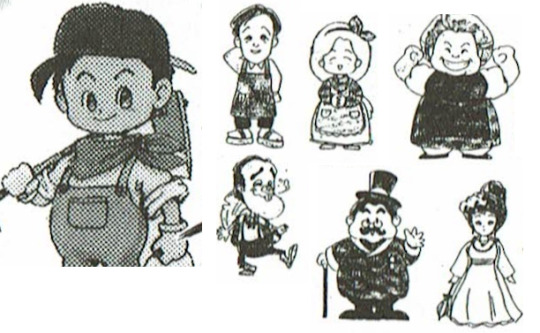
Igusa Matsuyama: They're all characters that appeared in the SNES version of "Harvest Moon." Nina's parents, Ellen's mother, Ann's father, Maria's parents (The mayor couple). I'm sorry. My SNES illustrations have gone missing...
Raven Bloom, Ryan, and Moth ask: How did you feel when your designs for the men in A Wonderful Life were repurposed to be bachelors? What do you think of the changes made to the bachelors in the remake of A Wonderful Life? I miss the “Bruce Campbell” look Matthew used to have.
Igusa Matsuyama: Matthew (マシュー) is Masshu (マッシュ) in the Japanese A Wonderful Life (Editors note: Charmy made a careless mistake when translating the questions, sorry Matsuyama san 🫣) When I first heard this name, the first thing that came to mind was Evil Dead's protagonist, Ash. You're right. I designed him after Bruce Campbell. I still love Bruce Campbell today. When Wonderful Life was under production, I had heard they weren't going to make a girl version, so I designed him not as a love interest, but as a quirky character. Knowing that he'd appear in the remake as a marriage candidate, I redesigned him as a character that would be liked by many. I hope you can enjoy the game for its nostalgia, as well as for being a shiny, brand new release.
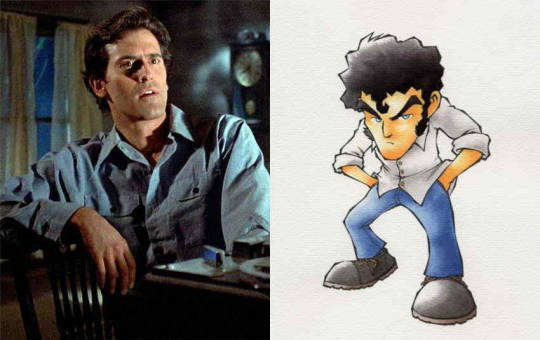
Salmon Axe and Anonymous ask: I personally adore Doraemon x SOS game. Are you interested in working directly with or collaborating with other franchises in the future? And is there a series outside Story of Seasons you would like to work with now as a guest artist? (Could it be Pokemon?)
Igusa Matsuyama: I've loved Doraemon manga since I was a kid! Working as a guest artist? Hmm, I'm happier being the main illustrator, so nothing in particular comes to mind. I enjoy a lot of games in my free time, such as Fallout, Far Cry and Border Lands.
Anonymous asks: Even though we never see his face, was there ever a concept of how Woofio would look without his costume?
Igusa Matsuyama: I designed Woofio as the being that is Woofio, so there's no design of him without his costume.
Idris asks: Your style has upgraded a lot over the time to match the trends. Do you think you will ever go for an old school look (early HM) for a SoS game again? What do you think is the secret to your art’s charm?
Igusa Matsuyama: What I'm particular about when designing for Story of Seasons is making characters with head/body proportions and an atmosphere that go well with that release. First, I listen to the client's request then think of a design according to that. These days, game visuals have gotten fancier and fancier, so there's not many opportunities for characters with short proportions to make an appearance. To me, what's important when designing is "playfulness." More so than "pretty" or "cool" and such, I get attached to the character, have fun making the character. I find joy in character creation itself.
MacGyver asks: Yasuhiro Wada has shared some interesting stories about how chaotic the original game's development was. Is there anything interesting you remember from around that time?
Igusa Matsuyama: Now it's a memory I can look back on and laugh about, but I'm not sure how much I can talk about it so please forgive me. If Wada hadn't been there back then, then "Harvest Moon" wouldn't have become a thing.
Toyberb and Anonymous ask: There’s a lot of different cow designs now, which is your favorite to draw?
Igusa Matsuyama: I've loved drawing animals since I was a kid, so I love all of the cows. Although the easiest one to draw is the cow with the big nose.
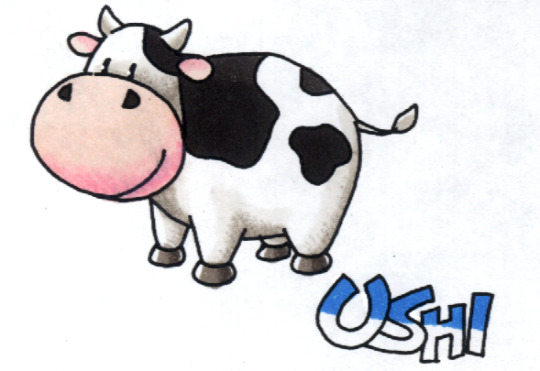
Anonymous asks: Were there any games where you made designs for protagonists of genders that did not end up available to play as? (Like a girl protagonist for Save the Homeland/Hero of Leaf Valley or a nonbinary protagonist for any game before A Wonderful Life)
Igusa Matsuyama: There's so many designs that got scrapped, but as far as I recall, there's not really many where that character's setting itself was scrapped. (Excluding Thumbelina, mentioned below)
Koharu asks: Were there ever any character designs made for other older SNES characters like Ellen for 64? Some magazines had Marie with blue hair, like the SNES character, so it made me wonder if she (SNES Maria) was meant to also be there at some point.
Igusa Matsuyama: I'm not in the position to make settings or scenarios where characters from other games appear, so I can't say, but I like the idea of older characters making an appearance!
Amina/k0iisu asks: Hello! I really love Hiro’s design specifically. Could you tell me a few facts about him/his design that might not be well known information? Thank you so much! I love your art :D
Igusa Matsuyama: Thank you very much! Hiro is a future doctor, so I tried to make them look as much like a doctor as I could. Also, to make him look friendlier, I designed him as your average everyday boy you'd see in the neighbourhood. He doesn't have a flashy face or hairstyle, but he's one of my favourite designs, too. I wrote this in the guidebook too, but what I like about him is the Asian flair I added to his clothes and the spot of colour around his feet.
Bunbun asks: I'm excited for the Nendoroid that was announced of Claire! I hope there will be ones of HM64 designs too. Since you have a lot of figures on your blog, how does it feel to be able to add one of your own characters to your collection? Are there any of your other characters you hope will get figures of?
Igusa Matsuyama: A nendoroid of Claire! I'm looking forward to it too, but when is it going to be released? If it's possible, I'd like one of Woofio.
Editor's note: Preorders are open for Nendoroid Claire now!
Chickee asks: A purple-haired princess character was rumored to have existed in Harvest Moon 64, but she didn't make it to the published game. Did you create a design for this character?
Igusa Matsuyama: That's probably Princess Thumbelina. Wasn't she Incredibly small? What I designed didn't end up being used. Speaking of HM64 characters, I pushed for them to include a pet turtle, but in the end it only appeared as an ornament. For A Wonderful Life, I asked for a turtle to be included again and designed a tortoise with a scarf, but it didn't make it as a pet and appeared only as a wild turtle that walks around the pond. I'm waiting for the day they finally include a pet turtle in the game.
emery flower147 asks: omg I saw the pics where the AWL girls are in a team and Muffy has a shotgun and stuff? Do you think any other characters would work in a cool team like that?
Igusa Matsuyama: For the Friends of Mineral Town guide book, I had the five girls, Popuri, Marie, Ran, Elly and Karen work hard as Harvest Sprites. Also, for the guide books, I drew Pete (The old male protagonist), Sarah (The GB version female protagonist), and Claire doing whatever I wanted them to. I don't know if you can call it cool or not, but it was fun being in charge of that.
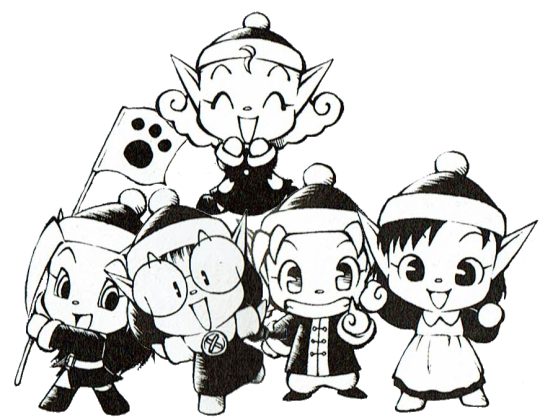
Ixur asks: A lot of the PoOT character designs for the regular villagers seem more popular than the marriage candidates in my region. Is that something that's been noticed by you/Marvelous in Japan? Lars, Clemens, Beth, and Misaki for example.
Igusa Matsuyama: Marvelous doesn't really talk about that sort of thing so I'm not sure if they're aware of it or not. I don't do social media so I'm also not sure which characters are popular. I'm happy as long as the characters are liked. The design on Lars’s shirt is modeled after my beloved dog, so I’d be especially happy if you like his shirt too.
Anonymous asks: What do you think about people cosplaying your designs?
Igusa Matsuyama: It makes me very happy! I'm no good at sewing, so I really admire people who can make their own clothes. It's an honour having the designs I made be made into real clothes, and I think it's great to have fun acting out the characters.
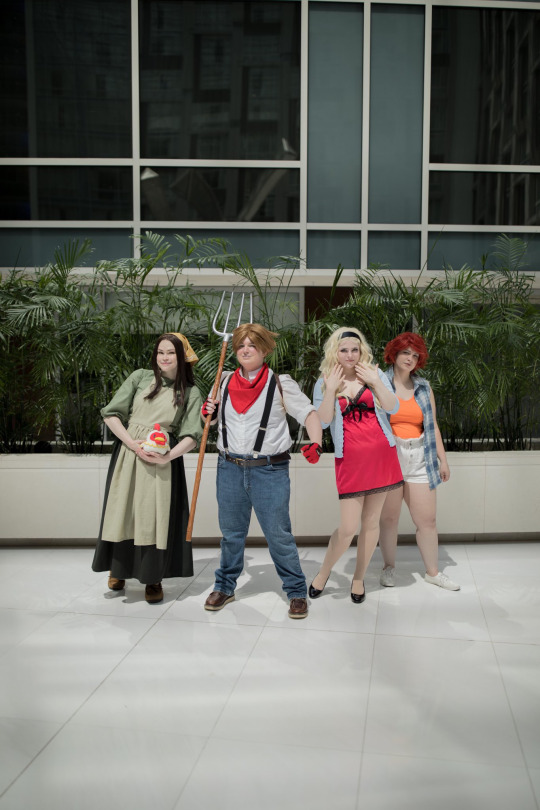
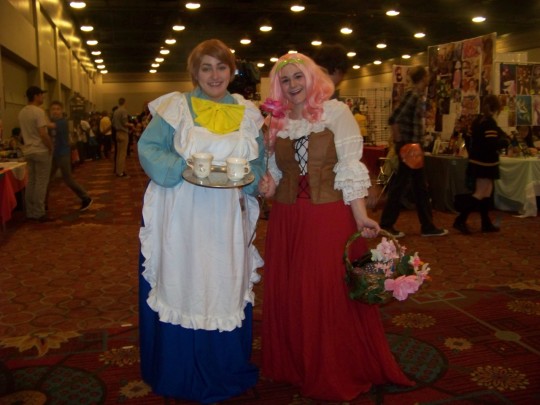
Afro Fae asks: When creating designs for characters, how do you settle on a specific color palette? Do you take color meanings into account with a character's personality or do you go purely off of feeling?
Igusa Matsuyama: I keep in mind the overall colours the client asked for while designing. Sometimes I propose a new colour when I think there's one that fits better. I'm also careful when choosing colours and everyone's traits to make sure it's easy to tell which character is which when seen from a distance. However, in the cases of families and such, I do the opposite and give them all a common colour to give them a sense of kinship.
———
From all of us at Ranch Story, we'd like to thank Matsuyama from the bottom of our hearts for answering our questions again! Whether a fan has only just discovered the series or has grown up alongside it, so many people have loved these characters and worlds that Igusa Matsuyama brings to life, so it feels truly special to be able to have this opportunity. We'll end this article with Matsuyama's own words, as well as a parting gift.
Igusa Matsuyama: I'm so glad I could answer your questions again. I'm the one that should be saying thank you. It means the world to me knowing that everyone enjoys my illustrations! I added an illustration as thanks. I'll keep up the hard work!
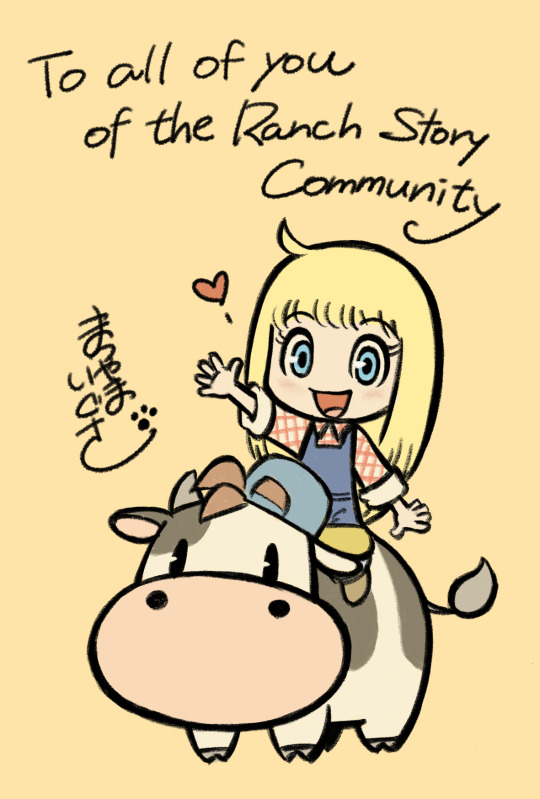
#story of seasons#harvest moon#igusa matsuyama#magical melody#claire#harvest sprite#marie#popuri#karen#elly#ran#a wonderful life#harvest moon 64#matthew#cosplay#evil dead#ash j williams#bruce campbell#jamie#harvest goddess#fallout
187 notes
·
View notes
Note
Hi, i'm a newish bl drama watcher from thailand that just started watching thai bls. i'm a bit ashamed to say that for a long time as a gay man living here i've been avoiding bl shows like the plague cuz of both the fandom reputation and of misconception from my yaoi era which i leave far behind. i'm just want to ask how did you got into watching thai bls and what were you preconception before you got into it.
Welcome to the Tumblr side of BL fandom. I'd actually like to also hear more of your experience with yaoi and BL as a gay person growing up in Thailand if you're willing to share.
For me, I'm a Black American from the Gulf Coast (the South). I grew up in a Catholic city and spent my entire adolescence in the closet. Despite having a sense of who I was as early as 8 years old, I kept most of that to myself. Because I didn't talk about it much with people, I found out most information about queer media and queerness from the internet.

I entered BL via queer cinema. I think the first explicitly gay character that I remember from TV was Marco from Degrassi: The Next Generation. There were probably others, and definitely more subtle expressions, but when I think about the oldest gay character I remember and connect to, it's Marco. I don't like counting things like shipping Shawn and Corey on Boy Meets World or Tai and Matt on Digimon for oldest gay characters. Sailor Moon can't even count because we got a censored version of it in America.

I got access to satellite television away from observing eyes around age 16 and started watching content on Logo back when they aired gay content regularly. I watched basically whatever I could late at night. It's how I saw movies like Get Real (1998), Beautiful Thing (1996), and Bent (1997). It's also how I saw Queer as Folk (2000-2005) Noah's Arc (2005-06).

After hitting adulthood I mostly got lost in video games and standard American TV for a while, but I did basically show up to any Gay Event in TV. I appreciate that Stef and Lena from The Fosters (2013-2018) were some of the only TV lesbians to survive the horror of 2016.
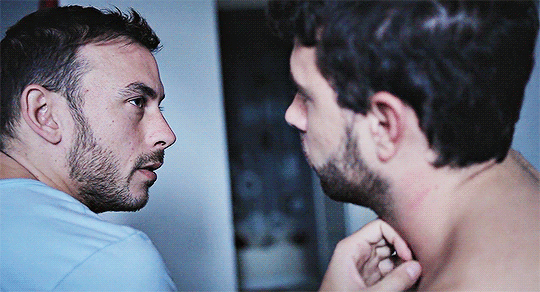
I watched a bunch of movies in this time, many of which appear on the Queer Cinema Syllabus I made for a hypothetical Westerner new to BL and queer cinema, which @wen-kexing-apologist has decided to try to complete.
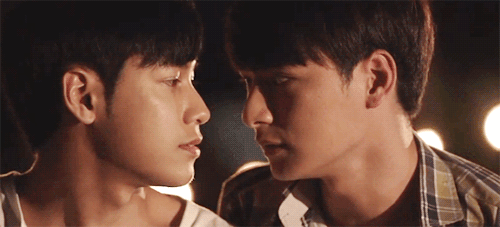
I got into Thai BL in 2018 accidentally. I started seeing gifsets of Kongpob telling Arthit he'll make him his wife passing around Tumblr and was basically like, "Right, what's all this then?"

I had watched a few Thai gay films, mostly notably Love of Siam (2007), Bangkok Love Story (2007), How to Win at Checkers Every Time (2015), and The Blue Hour (2015), but this was the first time I was seeing a long series made available so easily from any Asian country.
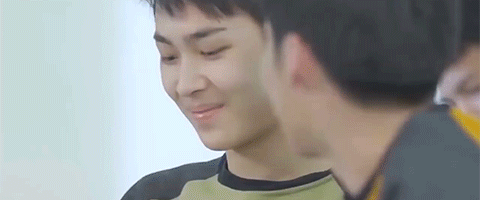
From there I got into Make It Right (2016-17) and Love Sick the series (2014). Once I realized that yaoi had moved beyond manga and a few anime adaptations, I went looking for a lot more. I basically haven't left since I started in about 2016 with SOTUS.
There's my basic entry into the genre. I don't think I was as worried about fandom and worries at the time because so much of being a fan of queer cinema was a mostly-private experience for me for so long. I didn't realize that BL fans active in the space would predominantly be women or queers figuring themselves out. It took a while to adjust to that, and also to adjust my expectations of the kinds of queer stories BL distributors were willing to fund.

That being said, I tend to agree with @absolutebl that BL has a useful role in normalization for non-queer audiences who encounter it. I like cheering BL when it does things I think work really well, and also deriding it when I think it does things that are offensive to help nudge the genre and offer my perspective as a gay man.

I like the place we're at right now where there's way too much to watch for any person with other hobbies and responsibilities because it means that people can pick and choose what's to their tastes.

More often than not, I'm probably most-invested in something airing from Japan because of my melancholy nature, but there's so much variety these days that it's okay if you don't like everything. I certainly don't!
I'm glad you joined us on Tumblr and look forward to your thoughts!
161 notes
·
View notes
Text
When was the first 3D video game published? Trick question, this is a post about how "3D video game" is a meaningless phrase.
In 1984, King's Quest: Quest for the Crown was published. King's Quest was marketed as a "3-D Animated Adventure," even though it looked like this:

At first glance, it looks like any other low-resolution 16-color adventure game of the pre-EGA era. But it has one revolutionary feature that sets it a step above its peers: You can walk behind things.
To be clear, that's basically it. There's not even sprite scaling or anything; King Graham is the same size whether he's close to the "camera" or not. Modern gamers would probably find it a bit ridiculous to say this game has a "camera" at all. But you can walk around in that green field, and you can go behind the tree or the castle tower, and those things would hide the part of Graham's sprite behind them—and you could also walk in front of them!
Well, if you didn't fall off the bridge. Why did Roberta Williams never put handrails on those things?
Anyways, the next game I'm going to mention is Wolfenstein 3D (1992), another game which marketed itself on cutting-edge 3-D technology.
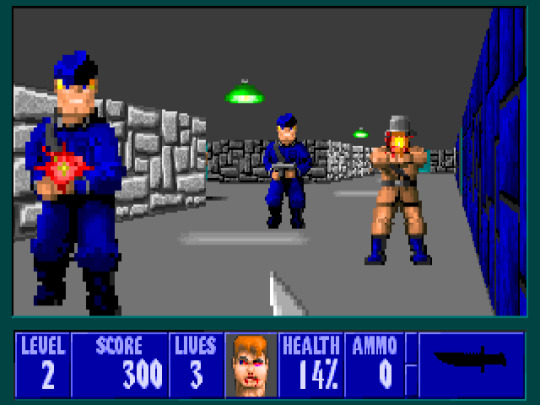
You can see a lot of graphical improvement between these two games set in castles, and not just because Wolfenstein has thrice the resolution and 16 times the colors. The sprites can be scaled with their distance from the camera, for instance, and the backgrounds aren't static flat planes. They're dynamic flat planes, capable of warping as your angle to the wall changes.
In some ways, this is as great a leap over King's Quest as King's Quest is over Zork, or at least Mystery House. But is it really 3D? It's still just a bunch of distorted 2D sprites being drawn to the screen. There's nothing really 3D going on in the computer. It's no Super Mario 64 (1996).
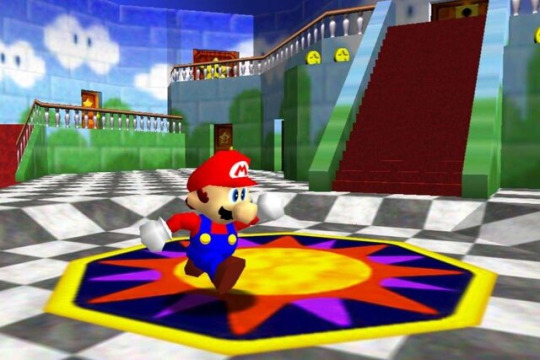
SM64 is among the first popular "real 3D" games, with models and polygons and stuff. And it is, again, a great leap above Wolfenstein 3D. It doesn't distort 2D sprites to mimic 3D shapes; it shapes 2D textures around 3D models. Totally different! It has polygons and stuff!
Now, I'm not 100% sarcastic about that. There are some technical differences between how SM64 handles its textures and how Wolfenstein and other Id shooters handle their sprites. But those differences aren't so much "doing something completely different" as they are "doing the same thing with fewer limitations".
And it would be absurd to claim that Wolfenstein graphics have more in common with KQ1 than with SM64. It would be even more absurd to say that SM64 has less in common with W3D than it does with older and newer titles using what people commonly consider 3D technology.


On the left we have Battlezone (1980), an arcade title which predates KQ1 as much as W3D predates SM64. It has little in common with Wolfenstein's graphics, not needing to distort any kind of 2D image file to mimic 3D, because it's just wireframes.
From a graphical perspective, it has more in common with KQ1 than W3D; both use vector graphics. (Bitmap images would take too much storage space for KQ1.) In fact, you could probably make a compelling argument that KQ1 and Battlezone's vector graphics have more in common with each other on a technical level than they do with Wolfenstein's 3D sprites or SM64's 3D models.
And on the right...it's either leaked security cam footage from Area 52, or The Callisto Protocol (2022). I can't explain what separates it graphically from the other games in this post, because there are so many new systems—systems which require specialist graphical engineers to understand, let alone create or use. I could rattle off some technical terms like subsurface scattering and cloth simulations and soft-body deformation, but I don't understand these techniques on anything but the shallowest level, and TCP has elevated them to another level.
I know it sometimes seems like graphical technology stopped having Big Improvements some time around the seventh or eighth console generation, but it kept going. The difference, I'd argue, is that the improvements have been more spread-out, enabled less by advances in hardware technology and more by learning how to use those advances, distributed throughout a hardware generation rather than concentrated at the start.
Anyways. The point I'm trying to make is that modern games make every prior game in this post look ridiculously primitive. SM64 was impressive in its day, but Mario is rendered with less than a thousand triangles, separated into several rigid components. And his face is just a couple dozen flat polygons with a texture printed on them. Even modern indie games often animate eyeballs with more polygons than Mario's entire body, with the eyeball and eyelid and so forth all being separate models with textures and shaders bringing them to life. Giving them more depth.
Making them even more 3D.
There is not a firm line between 2D and 3D. Wolfenstein 3D is more 3D than King's Quest I, and Super Mario 64 is more 3D than either of them, and Skyrim more 3D than that, and The Callisto Protocol more 3D still. If someone dismissed Doom as not being "real 3D," they're drawing an arbitrary distinction around one of many graphical innovations that made gaming graphics incrementally more verisimilitudinous. That's all.
#video games#graphics#3d graphics#cgi#meta#rambles#king's quest#wolfenstein#super mario bros#battlezone#the callisto protocol
509 notes
·
View notes
Note
Are there any changes in the adaptations that you liked better than in the book?
I kinda answered this once about how I really enjoyed the Monkey Magic 1998 and how they included Sanzang sneaking out of China to get the scriptures. This actually is more aligned with Sanzang's original journey rather than being similar to Xiyouji the novel. I thought this made Sanzang far more exciting as it gave him an in-depth look at how much he is willing to put his life and reputation on the line for the sake of these scriptures. It also makes sense that Sanzang doesn't want to get in trouble with any law if he is reported to the Tang Empire and deported back. It makes the stakes even higher for me as Sanzang is trying to keep three god-powered demon hunters in line.
I also really loved Bajie's backstory change in the 1996 series, where his punishment isn't that he was reborn as a pig but actually goes through 1000 heartbreaks, only to live through 501 of them and Guanyin saving him from the rest of the 499. I thought it made his vice of how easily and how deeply he falls in love shows the danger in how he can't control himself and just throws himself headfirst into any romance without forethought. The 1996 doesn't make love or romance a bad thing but rather gives a great insight into what you lose if you keep trying to chase happiness in other people when the only happiness you can attain is one that is found within yourself. Also I love the Sanzang of that series, as it was clear that he valued ALL life, yaogaui or human, making it fit much better why he wants Wukong to not kill ANYONE even if they could be a demon. Sanzang had that mindset that Wukong SHOULDN'T kill when someone hasn't hurt them... which made the audience question should WUkong punish demon for what they COULD do or must they have to wait for Sanzang to be in danger to really justify fighting them? I thought this made the Sanzang - Wukong fight with White Bone Demon far more interesting as it made the argument more realistic of two people trying to stick to what they believe is right. Wukong protecting Sanzang and Sanzang saving all life, yaoguai or human, has value.
A small detail but in the 1999 series I really enjoy the is that Wukong in the heavens destroyed the Imperial Stables not because of his low rank but because he wasn't really in charge... which is because of his low rank but he was morso made that he wasn't in charge moreso than any title thing. And in that he actually brought his fellow horse stables people to earth where I link to think they became the horn demons that gave him his Great Sage Title.
Also a classic but the 1987 series where they gave Bailong Ma his iconic backstory of his failed romance. This is where I was GASLITE in believing this was canon for YEARS but no it was just the series giving Bailong Ma more screen times where he actually burned down his father's home when he found out his now ex-fiance the Wansheng Princess was CHEATING on him with the Nine Headed Demon. I thought that it gave Bailong Ma at least ONE SCENE that he needed to be more in depth... also Wukong and Bajie being homies in that series and called Nine Heads ugly and how dare he steal their bro's girl. Fantastic arc!
Also any series that makes Wujing a silent genius, I just really like that trope where they show him being both sincere and kind but also he only speaks when he has to. It's not that he doesn't have much to say but when he does talk it always holds value. I see this a lot in actually the Saiyuki video game and Demon Strikes Back movie. It shows to his emotional intelligence and how he understands what is going on but just chooses not to meddle as that is not in his nature. I really like that as it shows his skills in reading people but also his own vices in his inactivity. I'm a big fan of the 1996 Wujing but he played as more of the emotional comfort of the group, the loyal and honest campaign between Bajie's and Wukong's stubborn pride that needed to break the group tension. I feel like there could and should be a perfect blend of these characteristics in a future series.
Honestly, some so many media and adaptions is it kinda hard to think but these are some of my favorite!
#sun wukong#anon ask#anonymous#anon#jttw#journey to the west#xiyouji#ask#zhu bajie#sha wujing#bailong ma#tang sanzang
22 notes
·
View notes
Text
Psycho Analysis: Bowser
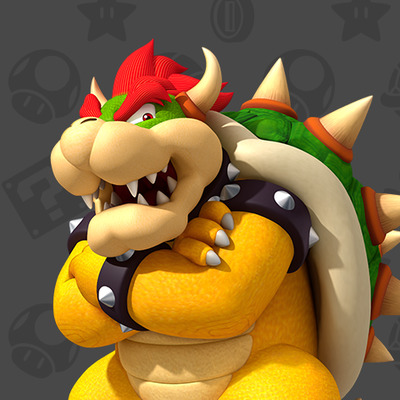
(WARNING! This analysis contains SPOILERS!)
Most of the time, saying a character needs no introduction is a bit of an exaggeration, because there is always the chance, however slim, that someone has not heard of that character. That’s not the case here, though; you could go to the deepest, most isolated jungle tribe on Earth, ask the villagers if they’ve heard of Mario, and they’ll all start singing out the Mario theme music. With that in mind, today’s subject absolutely needs no introduction, but out of respect for the King of Koopas I’ll give him one anyway: This is Bowser.
Bowser is not simply a video game villain. Bowser is THE video game villain. Like Mario, Peach, and Luigi, this big old turtle is pretty much a household name, loved far and wide for his iconic design, simple yet effective boss battles, and his inexplicable yet somehow still understandable sexiness. The question is, can I make it through this review without making some sort of crude comment about the raw sexuality the King of Koopas exudes? Lets find out!
Motivation/Goals: Bowser from day one has always been a pretty simple man. All he wants in life is those peaches, peaches, peaches… And I mean, really, can you blame him?

Yes, his motivations and goals are pretty simple and shallow, but he always manages to make something as trite as rescuing a damsel in distress fun and refreshing. His strict adherence to basic formula leaves a lot of room for mixing things up though, and this same adherence makes the times when he breaks tradition and does something like fight on Mario’s side all the better. And sometimes it’s clear Bowser just wants to relax and fuck around by karting, playing board games, or competing in some sort of sport.
It’s a fun little twist on that old “Knight rescues a princess from a dragon,” except the dragon is a giant turtle and the knight is an Italian plumber (a more powerful force than any knight could hope to be). Of course, the fact Bowser is incredibly obsessed with a woman despite her wanting nothing to do with him means that Bowser is—you guessed it—a

Performance: Hoo boy, are there a lot of Bowser voice actors.
The cartoons used Harvey Atkins, who delivered a fun and cartoonish take on Bowser; Marc Graue voiced him in Hotel Mario, but this isn’t shocking as he was basically every male character in that game; Peter Cullen technically voiced him from 1996 to 2006 due to archival roars he provided for the 1976 remake of King Kong being repurposed for Bowser’s own roars; Charles Martinet provided his iconic evil laughs for 64; Kenny James is his current voice actor; Jack Black turned in a very against type performance in the Illumination movie; and Dennis Hopper of all people portrayed him in the live action film from the 90s. And these are just the ones I wanted to highlight! There are a few English voice actors I skipped as well as his extensive Japanese voice cast! Here’s the complete list, just so I’m not here all day:

The point I’m trying to make is this: Bowser’s iconic status is completely a group effort, and each of these dudes helped contribute to Bowser’s status in our hearts and minds in their own unique ways.
Final Fate: It really depends on the game or movie or whatever, but he is always defeated by Mario at any rate. Sometimes he’s simply defeated and sent on his way; sometimes he’s captured and imprisoned, like in the animated movie; and sometimes he just fucking dies, like in the live action movie and New Super Mario Bros. Don’t worry, he gets better.

Best Scene: Bowser in the earlier games had rather simple boss fights, though they weren’t completely unmemorable. Still, out of his early days it’s hard to deny his epic battle against Yoshi in the finale of Yoshi’s Island, where his child self is grown to gargantuan size and ominously lumbers towards you from the background while a hardcore boss tune blasts through your speakers, is the peak of his NES/SNES days.
youtube
Then we have his early forays into 3D, and it’s inarguable that the boss fights he has against Mario in the timeless classic Super Mario 64 are some of his best, even if they are rather simplistic. I mean, this is where we got “So long, Gay Bowser!” from, can you really deny its place in Mario history? And those are just a couple! We could probably sit here all day talking about his great battles in games like Odyssey, New Super Mario Bros, Galaxy, and so on.
youtube
Bowser’s most impressive showing outside of the games is The Super Mario Bros. Movie. The initial teaser for the film, which showcased his opening fight against the penguin kingdom, really helps establish Bowser as the threat he is, and the final battle and the wedding scene in the movie are some of his greatest villain moments to date. But I’m going to be cliché and give the spotlight to his villain song, “Peaches.”
youtube
Here’s the thing, though: As a song, “Peaches” kind of sucks. It’s just Jack Black saying “Peaches” fifty times in a row and then making Jack Black noises. But that’s also what makes it so genuinely great; in the hands of a lesser actor/musician, this really would just be the dumbest shit imaginable, but in the hamtastic hands of Jack Black the song has become an instant legend. I think the visuals and the beautiful piano playing really help, not to mention the official music video where JB dresses up as Bowser and tosses peaches around. Lyrically it’s nothing to write home about, but man does the performance really sell it.
Oh yeah and there’s this too:
youtube
Final Thoughts & Score
It is near impossible to overstate how iconic, important, and downright awesome Bowser is.
Like, this guy is the final boss. He pretty much codified what that means in terms of video games, being one of the first iconic big bads of gaming and the first adversary a lot of gamers fought. It’s kind of hard to believe today, but the original Mario games were genuinely some of the most groundbreaking games of all time, and the only reason it’s hard to believe is because video games have been building off the groundwork they laid down back in the 80s. Bowser is no exception; every single video game villain, especially platformer villains, owes a debt of gratitude to the king of the Koopas.
I think part of the reason Bowser has managed to survive and thrive through console generation after console generation is because he, much like the rest of the core Mario cast, is extremely versatile as a character and can slip into any situation with relative ease. He can be an evil overlord, a bratty child, a loving father, a kart racer, an Olympic champion, a platform fighter combatant, the owner of a Coney Island disco palace, a giant skeleton, a board game player, it doesn’t matter! Bowser can do it all! He can be a goofy, bumbling comedy villain or he can be a galaxy-destroying threat that would make Thanos shit himself, he has range like you wouldn’t believe!
It helps that both times he has shown up in a movie he has managed to be a scene-stealing smorgasbord of ham and cheese. Dennis Hopper’s madcap, in-it-for-the-money-but-not-half-assing-it performance in the live action film is so delightfully over the top that he manages to make the mere act of saying “Monkey” and “Bob-Omb” memorable and meme-worthy. While he’s a bit far off from what you’d totally want from Bowser, and his saurian form gets relegated to a two second cameo before his death, it’s hard for me to really give him less than a solid 7/10. He’s just too damn fun.
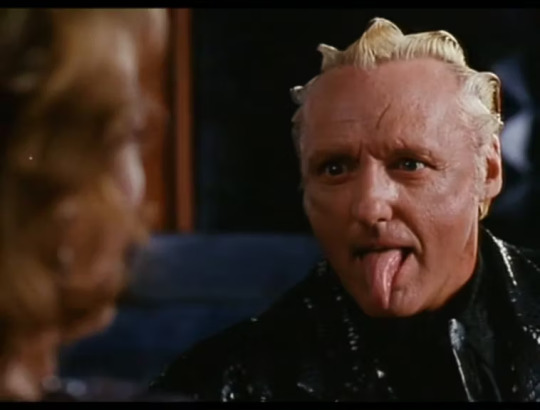
Meanwhile, Jack Black delivered a performance so good that it makes it easy to overlook the many problems the movie has (like its terrible needle drops). He’s just so fun, funny, and even genuinely intimidating, perfectly mixing all of the traits that make people love Bowser into one big, juicy package. I think everyone knew this was going to be a 10/10 performance right from the moment it was announced, but still it was pretty impressive just how well Black was able to slip into Bowser to the point he was almost unrecognizable at times.

No one would argue that Bowser deserves less than an 11/10; he is genuinely one of the single most important characters of the 21st century, and has made a mark on gaming that very few villains could match. He is to final bosses what Dracula is to vampires, what the Wicked Witch is to witches, and what Fu Manchu is to racist caricatures of Asian people. Other villains have more depth and complexity than Bowser, but that doesn’t really matter when he kidnaps Peach for the thousandth time and throws an army of freaky mushroom men and crazy turtles at you, because you’re gonna be there helping Mario stomp those Goombas to get to him. Bowser is just an icon, and his place in video game history is absolutely, utterly gargantuan.
JUST LIKE HIS DICK!
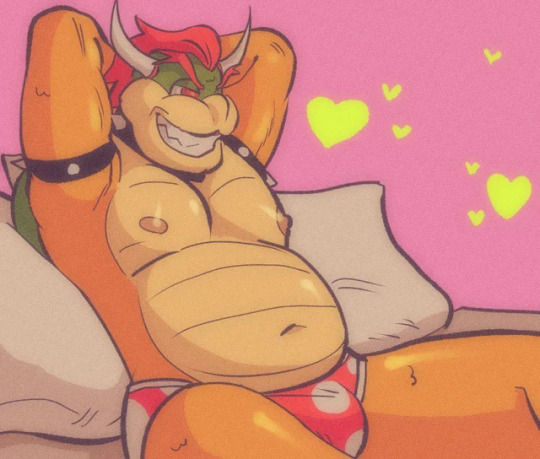
26 notes
·
View notes
Text
Are all of these gonna be character specialized? Maybe, not sure myself.
Welcome to Episode 6 of (Tottemo) Waku Puyo Extras. (Feat. A lot of Kikimora.)

(Yeah, this time it's not from the Waku Puyo Manga, but from the Totally Puyo Puyo Manga. Or the Tottemo Puyo Puyo Manga, either name works. I swear the Waku in the title is losing more relevance as time goes on.)
Hello, one and all, it's that guy who translates a niche video game here again, and welcome to Part 6 of (Waku) Puyo Extras, the filler section where I ramble about something Puyo related and give some old evidence to back it up. I know I'm a little late, but hey, that's high school for ya.
If you've been keeping up with this filler show of mine, you know that I typically post about a character, have a small video to translate, and...idk something wacky. And today, you'd be a little mistaken. Unfortunately, due to time restraints, I wasn't able to really...do a short video. My apologies. I did say that my schedule would be really messed up due to school, and now I'm finally feeling the effects.
To make up for it, this'll what we cover today:
Some stuff about Kikimora because why not, she's been in so many videos and episodes that she deserves it. I'll speak about things like her origin, Waku Puyo Dungeon: The Video Game, and the Waku Puyo Manga.
Talking about a Disc System Game. At least the one that has Kikimora.
Talk a bit about the Tottemo Puyo Puyo Manga. The thing itself mostly shows odd Puyo SUN characters, so people like Lagnus are there.
From now on, expect a lot more inconsistent posting. Obviously I'll post still, just...not as often. Hope you understand.
With those precautions and tales told, hope you enjoy.
-----
Ah, Kikimora Lore.
You don't exactly expect a lot from this character, and frankly, I don't blame you, but I'm here today to speak about our (probably not) favorite maid in Puyo, Kikimora. If you've seen my posts, you noticed that she appears quite often in translations and random stuff in general, even though she's usually a minor NPC. Won't be covering every game she's in, but I'll mention a couple.
So, what're her origins?
Well, it's not SUN, actually. Surprisingly, it's Madou Monogatari: Michikusa Ibun, released in 1994. Here...she's just kinda an enemy. Nothing more, nothing less. Quite a simple introduction.
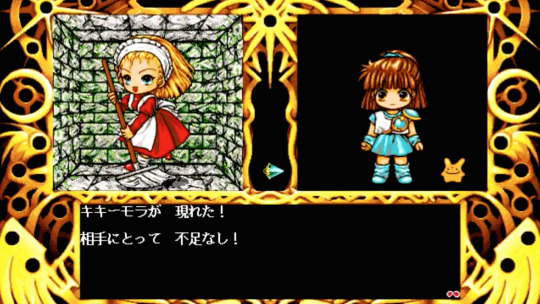
Now, we reach the introduction that most people know her for, Puyo Puyo SUN, which was released in 1996. Here, you meet her in Arle's storyline, where she's just cleaning, as per usual. Why outside is anyone's guess, but after seeing Arle walk along the sidewalk, she legitimately sweeps her off the ground, and then runs around with her, who's in shock. I mean, I'd be shocked too.
So, 2 introductions in and she's put...nothing special in these, to be frank. Maybe she really isn't that gre-
Holy shit I'm actually speaking about Waku Waku Puyo Puyo Dungeon again.
As the local Waku Puyo guy, fortunately and also unfortunately, there's...actually a good bit to speak about with her, which is fairly surprising.
First, she's in every single route, and you don't exactly fight her. She's an usher who helps guide people around the area and tell them what to do and where to go. Here... she actually does have a good amount of character compared to back then.
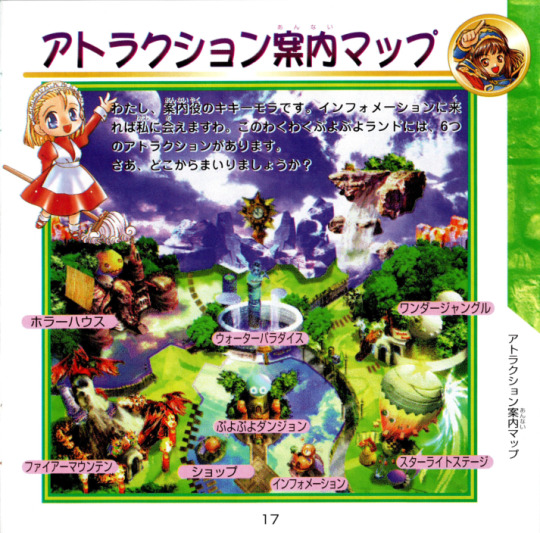
(Image of her and the entire map of the game, featured in the games manual.)
Here, she partially retains her cleanliness personality, but she's now awfully kind about it, I'd assume it'd be for professional purposes but still, power to her. She isn't as...angry, as her past self, (I'd count Puyo-N because she did get really upset that Arle called her old.) and even in the Waku Puyo Manga, she's still very much kind to Rulue when she runs into her, merely giving directions of where she saw Satan.
And back to the game itself, she's a little more than just happy and angry, she thankfully unlocked more of the personality skill tree and got the ability to be sad as well. Throughout Schezo's storyline, there's moments in times he calls Kiki useless for not being able to help her, and as anyone would, gets really sad about hearing that, and in some situations, starts to cry, causing Schezo to apologize. It's fairly interesting how they basically gave a character with little screentime back then not only the screentime she got, but to expand on it to feel multilayered as well? Nothing short of impressive.
The final game I wish to cover is a bit of a niche one; Kikimora's Clean-Up.

Usually with Disc System games, there's a good bit to talk about, but unfortunately, this ain't one of the games. The game stars Kikimora, and your goal is to...clean the floors. Simple enough, while having a Pac-Man like feel to it.
There's several floors and the goal is to get all the green, icky stuff out while avoiding enemies. You can launch your broom at them, taking them out, but you won't be able to clean until you get the broom again. Getting hit makes you lose 30 seconds, lose all your time, you lose a life, and if no lives, game over. It's actually more difficult than it seems.
Finally, after a lot of floors and possibly dying, you finally face the final boss of this game: Black Kikimora, who makes the floor dirty.

After beating her, congrats, you've beaten the one game Kikimora is the protagonist in. Give yourself a pat on the back and maybe some lunch.
Unfortunately this game doesn't have much in terms of lore, but it's an enjoyable game nevertheless. Here's a link of some gameplay.
youtube
Now how about the Tottemo Puyo Puyo Manga? What is it?
I'm glad you asked. To compensate for being unable to publish a video for y'all, I decided to speak a little bit about this goofy manga. So what's it about?
Unlike the world of Waku Puyo, this doesn't have a full storyline but rather sporadic storylines that have absolutely nothing to do with each other. They're purely on the comedic side. As well, the designs that were chosen, along with the artstyle itself, are based on Puyo SUN, what with how the characters' designs are drawn most notably Arle, Schezo, and Lagnus.
Since the storylines don't connect and are all separate, characters can pop in and out like nothing ever happened, or just...randomly waltz up like Lagnus himself did. (Which I cannot show because 10 image limit.)
Here, featured is Kikimora getting an injury from making a mistake, and Arle heals her before telling to take a break for half the day, SHOCKING Kiki. She starts saying how some areas aren't clean, and Arle volunteers to help, which makes Kiki beyond happy, and leads to us getting Arle in a maid suit trying her best to clean.

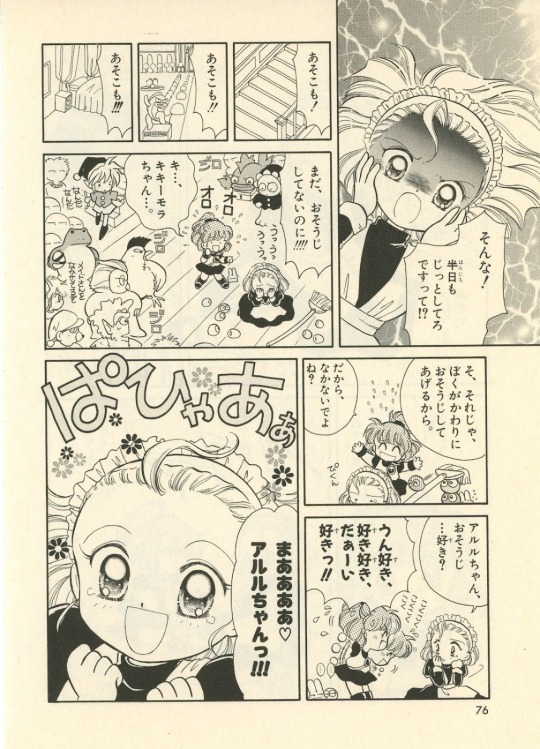

Unfortunately, due to that said 10 image limit, I cannot post a lot at once. (Wish it was like 15 instead,) but honestly, I'd recommend it. While you might not understand what's properly going on, (Believe me, I'm there to a point.) the visuals themselves kinda make up for it, and hey, if you do translate them, there's a 90% chance there's an incredibly silly and funny story to go along with it, like Schezo somehow making an amusement park. (My favorite Foreshadowing; The ones in gag mangas.) I'll post a link of some of the books here.
Hopefully this'll suffice. Again, my apologies for not really posting a video, I'll have one done sooner or later (aka about 2 weeks.)
Here's the final 2 images I've been saving up.
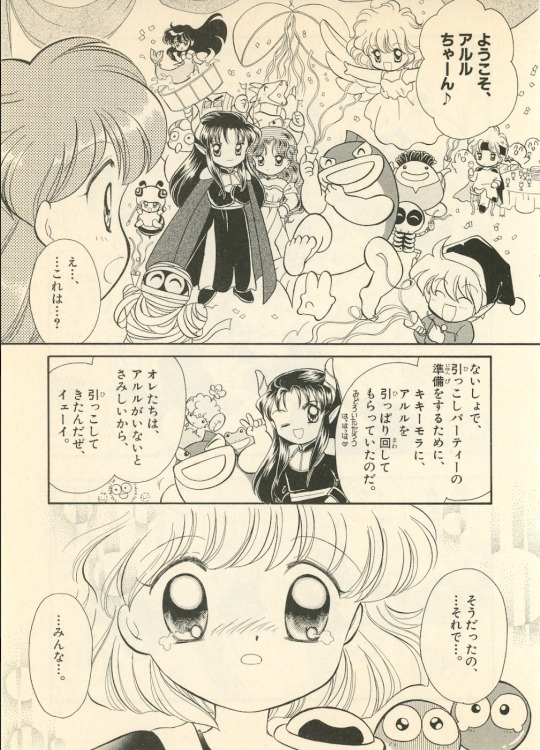

(Minor context: Kikimora kinda lured Arle into a job before surprising her with a party.)
With this, that'll be all this time.
See you next time.
#Youtube#arle puyo puyo#japanese translation#madou monogatari#waku waku puyo puyo dungeon#puyo puyo#sega#sega saturn#arle nadja#schezo puyo puyo#rulue puyo puyo#puyo#kikimora puyo puyo#puyoposting#informative#Disc system#puyo puyo sun
10 notes
·
View notes
Text
Regis Philbin Teaches Computers In His New Book.

"So the first time I got on the computer, my niece was showing me how to set up an e-mail, back in the 90s, this must have been 1996, 1997. And I thought, great, saves me a stamp. But she said, Uncle Regis, it's so much more than just e-mail. You can look up stock quotes. You can order flowers. You can research the rainforest. So I thought, heck, that's not bad. And I can do all this, through my phone line? She said, just you wait. One day, you won’t even need a phone. She’s always been so sharp, my niece.”
"I remember when I discovered chat rooms. I went in one under my screen name, BIG_PHRANCIS_X, totally pseudonymous, and I thought, wow, this is true freedom. The World Wide Web, at my fingertips, and no expectations, no one knows its me. I can surf anywhere. I can say anything. I had a great discussion with some folks that first time, talking about video games, which was better, the Sega or the Nintendo. I didn’t have an opinion. No idea! Then a man sent me some sexual chats, talking about his power tools and so on, and so I skedaddled.”
“My first webpage I visited was a hoot. The way it worked was, you put in your name at the top, or any name, I suppose, and it generated a fake doctor’s excuse for you. Really outrageous stuff — “acute case of Sunday hangover,” or “Got bit by a llama,” that kind of nonsense. Who comes up with this stuff? I would go to that site, every day for about a month, first thing, right with my morning coffee.”
“Eventually, I went to a second webpage, website, whatever. It was a repository of stories that this man, a European I believe, had written. Long, really detailed fiction, lots of plots, but the general recurring theme was that a woman would end up sitting on him, or rather, the main character, who always seemed to be about the same type of European male, and the woman would use the main character as a chair, of sorts. Sometimes a stool, sometimes a bench. The women varied — tall, short, mean, kind, fat, thin, all sorts of women just using this guy as a chair. Sometimes they’d be drinking wine, sometimes reading a book. I didn’t realize it at the time but I think this guy really got his jollies from it. I guess that’s one of the purposes of fiction, to let us imagine the world as it could be, and this guy, I guess, he just wished he had been born as a chair.”
“Eventually I started racking up the pages. Dozens of web pages, hundreds even. I ordered more flowers, that first year, than Joy knew what to do with. “Reg,” she’d say, “more flowers?!” hollering back to the computer room whenever the delivery guy would show up. I also learned a whole lot about the rain forest, information I still rely on to this day.”
“But then, one night, I couldn’t sleep, and I was up, surfing the web. And I found a new web page I’d never seen before. It was written in riddles, long, recursive sentences, and when I’d go back to read the opening part, I swore it was changing.”
“The topic was vague, hard to understand. It touched on many things — pain, loss, love, triumph, fear, sex, death, the ego, the id — there was embedded music, a haunting leitmotiv played on an electric keyboard — it was a winding narrative, water down an escarpment, and the water came from a machine, an automatic author, a robot of sorts, it seemed mournful, a helper looking for someone it had lost, another script, another automaton, knowing only how to describe the world through its medium, maybe it was telling me the story as I read it.”
“I scrolled, and read, and scrolled, and read, and there, at the bottom of the page, I met God. I could recognize God, as a word, of sorts. God was a series of letter forms, glyphic, immutable, conveying nothing, conveying everything. God was a cursor. God was a scroll bar. God was script that helped track my visit. God was a broken image link. God was the embedded song that played on loop. God was the banner ad, loading at the bottom. God was offering a chance for me to click here for a free iPod, years before the advent of the iPod. God was not dissuading me, God was not encouraging me. I do not know if I have free will, I do not know if I am forsaken. I did not click to try to win that iPod.”
"Do you believe that? Do you believe God is at the bottom of a website? I believed it then, and I still do.”
Regis Weekend Has Been Extended Through Saturday, September 16.
9 notes
·
View notes
Text
Digital Essay on my Technology Literacy (Class Assignment)
Digital Essay on my Technology Literacy (Class Assignment)
In 1981 the IBM Personal Computer model 5150 was released. My parents bought one for my 11th birthday, thinking it would be a great asset for school. I used it as a glorified typewriter. You had to essentially add the programs yourself, and that was not easy to do. I was too young to understand what all the bells and whistles did, and there were not many. The World Wide Web, or WWW, was not introduced until 1989, my freshman year in college (the first go-round).
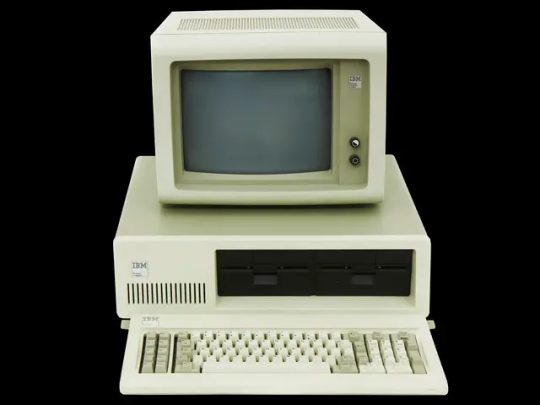
My first video gaming system was Atari. This came out in 1977. However, I didn’t get one until I was about 10 years old. To be perfectly honest, I wasn’t a big gamer. I skipped right over the Nintendo era. My cousins and friends had one, but other than Leapfrog and the first Mario Brothers game, it wasn’t my thing. I wasn’t good at Pac-Man either.
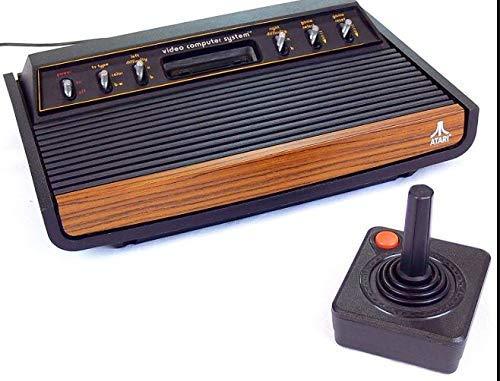
I bought my first cellphone in 1992. It was a Nokia. The first phone bill came in at $289. You got something for 1000 minutes free and were charged .30 cents a minute over that. I understand that in 2023, that may not sound like a lot of money, but in 1992, it took an entire paycheck to pay it. I made $7 an hour, and that was a decent salary working at Macy’s flagship store on 34th Street in New York.
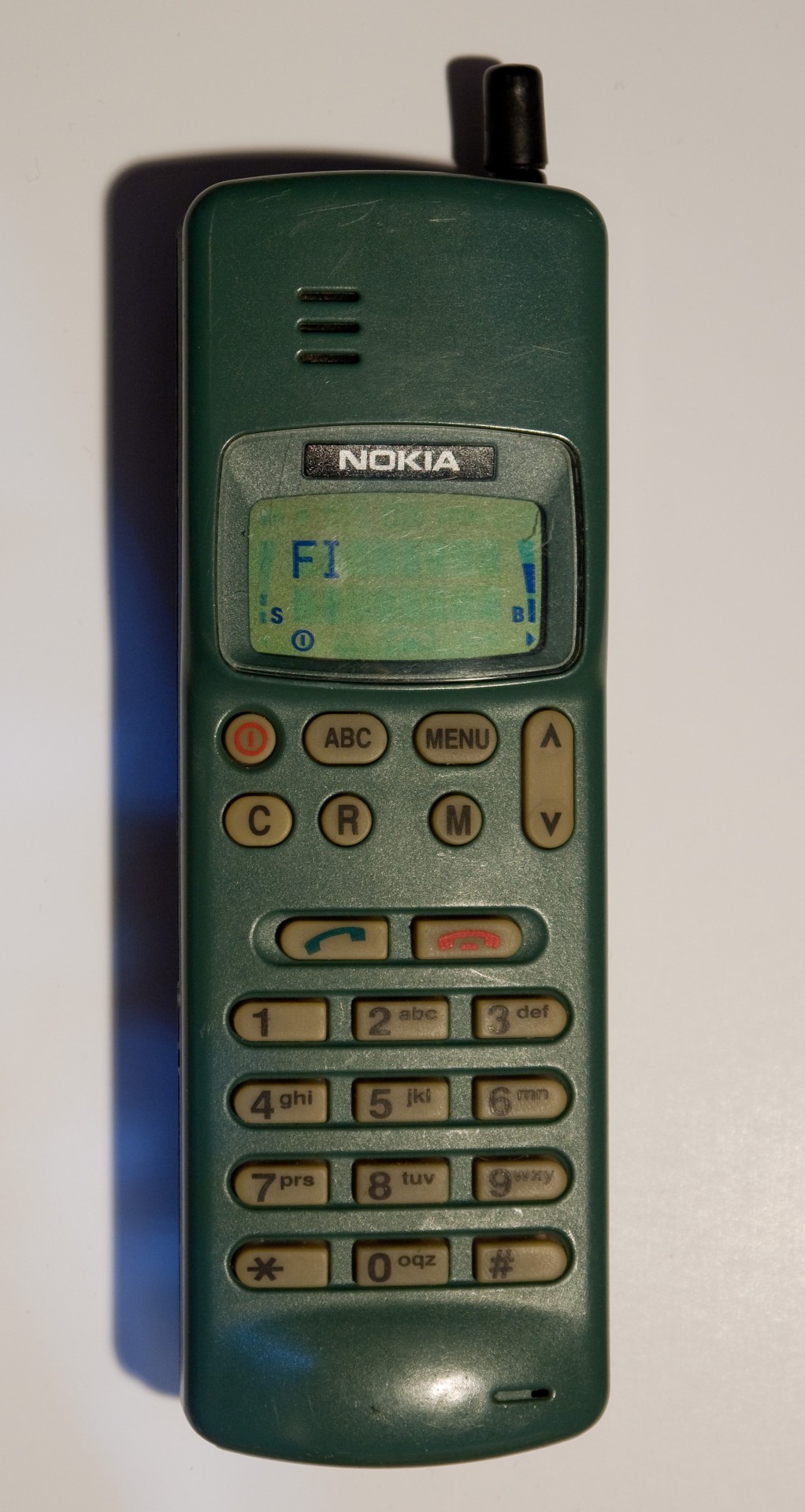
My son was born in 1996, and the world of technology opened new doors for me. I bought him a LeapPad to be used as a learning tool for reading and math. He graduated to every gaming system created from an Xbox to Nintendo. I was introduced to the World Wide Web through social media when Facebook became a thing because I had to monitor his use of this platform. By 2008, my son was in the 7th grade, and I allowed him to interact with his friends on Facebook, but his time was limited, and it was conditional upon him accepting my friend request. My acquired sons (I dislike the word step) were older than him, and they kept me in the loop about how social media worked. Facebook was great for me because it was a link to communicating with my family in New York without having to call all the time. It was great for sharing pictures. Social media has taken a turn, and in some ways its great for activism, in other ways, people are very comfortable being contrary and saying things they would say publicly.
My concern with the development of AI is how easily things can be manipulated. AI’s voice generator can create words that do not come out of someone’s mouth. I see the dangers in that with a political leader’s voice. Manipulating photos can be fun. However, it can also be used to lie about where someone is, what they are doing, and who they are doing it with. Technology is changing rapidly. There isn’t much a robot can’t do. From driving a car without human intervention to soon enough, flying an airplane. My question would be, will there be a time when life imitates art, and we are faced with an iRobot catastrophe.
My technical literacy is almost nonexistent beyond the day-to-day life of social media and basic content creation. As a creative writer, storyteller, and activist, I took this class with the hopes that I will be able to better understand the basics of web design and create more enticing visual content when I use TikTok and other platforms to display my work. I am a Global student, so my entire degree has been online. I graduate in May of 2024!
Over the last year, I have learned to use social media sites like LinkedIn to further my writing presence and create an outlet to network with like-minded people. I am a self-published author on Amazon, and I had to learn how to utilize Canva when creating my book "Journal and Manifest with Your Ancestors." So I consider that to be an incredible success since I created this journal completely on my own. I followed someone on YouTube to learn the ins and outs of utilizing KDP Amazon and Canva.
2 notes
·
View notes
Text
skull island: rise of kong – apparently no one remembers what games actually looked like back in the fifth gen
so if you do the Vidya Gaems, i'm sure you've already heard of the skull island: rise of kong game that came out last week.
needless to say, it's getting brutalized in reviews and by content creators/streamers, as it should be. it's a shit tier game and looks rushed and buggy as all fuck.
but one thing that i've noticed is people comparing the game to an N64, PS1, or other low-res polygonal game from the 90s/00s... observe:




so on and so-forth...
and it got me thinkin....
"do... do these people not remember what those games actually looked like?"
so out of total boredom and nothing better to, i decided to do a little bit of a "refresher course" on how games from the 90s actually looked compared to the dogwater that is skull island.
"but godtier!" you declare with marked concern, "i'm sure they were just being hyperbolic!"
and while yes, you'd be right to assume such things, i don't actually care because it gives me an excuse to look at old shit i played as a kid.
(also it's reddit and i would not be surprised if most of these weren't jokes.)
but from the informative angle, i have also noticed many, many young people who've never played a 90s/00s game thinking this is a legitimate comparison to make in general. so just think of it as a tour in a museum of graphical advancements.
what's the plan?
my goal here is to illustrate and educate about the generation of consoles that truly changed the way i viewed video games: the fifth gen. for the first time, i realized games could look real. it blew my little mind.
but in hindsight, a lot of these games can look laughable. by contrast, some people seem to misremember just how low res or outright bad the fifth gen of games look compared to now. some people seem to think games like the gollum game and the king kong game (today's specimen) are comparable to PS1 titles with how poor they look graphically.
i'm hoping to shed some light on that for those who didn't experience it themselves or never bothered to look.
how it works
i'll be using side-by-side comparisons with skull island next to whatever game in particular we decide to examine to highlight just how low res the fifth gen of gaming and CGI were compared even the wettest of farts from current gen.
note that since skull island is brand new, getting insanely high-res screens of it is not something i can do easily without buying the game myself. and i sure as shit am not buying a dog garbage game about king-goddamn-kong for 40-fuckin-dollery-dos just to illustrate graphical changes since the 90s and 00s.
instead, i've taken screenshots from YT playthroughs at 1080p. they should suffice.
in addition, i will be using cleaned up/clearer versions of the screenshots from the fifth gen games as opposed to direct rips that i'd come across back in the day. this is for the purpose of showing detail without upscaling too much and blurring everything more.
screens ripped from games in the fifth gen were primarily in 240i. therefore, the image dimensions were largely around 320x240 px on a computer screen. back then, that wasn't an issue since the maximum resolution i ever had in the 90s/00s was 800x600 px. but nowadays, that would look like a blur of mush on most people's screens. of note, i will not be using upscaled or remastered versions of these older games if they have them.
and finally, since this post intro is already really fucking huge and a lot to read through, i will be scooting the actual analysis under a "read more" for the moment. expand the link if you dare.
anyway
let's start with the N64!
part one: THE NINTENDO ULTRA 64
released in 1996, the N64 was a cartridge-based system, for those who don't know. this meant that the loading times were super-fast compared to disc-based systems, but the actual storage on the cart was abysmal.
back then, carts were still using ROM, as opposed to SD flash that you'd see used with a nintendo switch game card. this means there was hardly any room for things like FMV (full-motion video) or even voice tracks.
to compensate, developers had to choose between graphic fidelity or audio fidelity; they could not have both in most cases. textures were downscaled or removed, the resolution was as low as feasible, FMV, in-engine cutscenes, or audio (such things that might have been present in another version of the same game) was removed outright in order to make space on the cart for the game functionality itself.
one game i saw thrown around a lot in comparison to skull island was turok 3. a good lot were saying it looked about the same or worse than turok 3.
but does it really? let's take a look.
round 1: skull island (PC) vs turok 3 (N64)
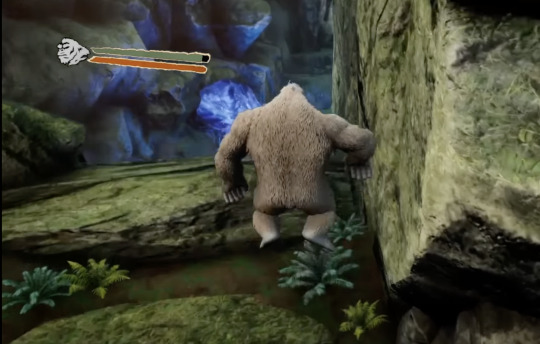
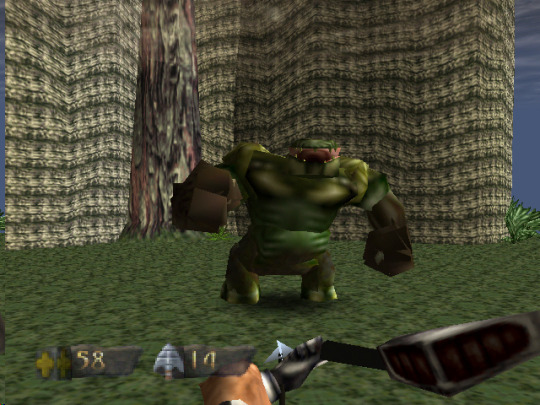
welp. as we can see, there's really no comparison. skull island's environments, while drab and uninspired for a current-gen title, are wholly and objectively better-looking than turok 3's environments. even the character models are night and day. at least you can see kong's individual fingers, rather than the lumps of flesh they called hands in turok.
it is quite misleading to claim with seriousness that a game like skull island could pass for an N64 title. it could not, not even remotely close.
there's really little else to say about this. the images speak for themselves.
round 1 results: really guys. really.
next, the PS1!
part two: the sony playstation singular ballin
coming out in 1995, we got one of the best-selling consoles of all fuckin time, the playstation. compared to the N64, the PS1 blew it out of the water in every technical field aside from loading times.
graphical fidelity was higher, audio fidelity was higher (actual, literal CD audio on many games compared to the bit-crushed fare on the N64) and storage space was massive for the time. you'd think out of the two contenders so far, the PS1 would have the better shot of looking superior to skull island, right?
well, yes and no. it depends on the era. while most N64 games that were going for realism looked like varying degrees of mush, the PS1's graphical quality varies wildly depending on when during its lifespan the game came out.
since turok 3 came out in 2000 for the N64, i'll pick another game that also came out in 2000 to make sure we're on as even a playing field as possible.
round 2: skull island (PC) vs vagrant story (PS1)


here we can see just from this singular screenshot that vagrant story is absolutely gorgeous for a PS1 game. and i would say that's because it was a game released towards the end of the PS1's original lifespan. devs by 2000 were fairly familiar with working on the hardware, and vagrant story was a squaresoft (now square enix) title, who released a crapload of games on the system. they were one of the developers that really knew how to push the PS1 to the limits of its capabilities.
however, they were still pixelated and blobby when it came to actual character models.
"but godtier!" i hear you howling in despair, "the backgrounds for vagrant story look so much better than kong's crazy island!" and you'd be correct! those backgrounds are banger af.
but the argument to be made in this post isn't "which one actually looks better." the argument is "compared to another game contemporary to the fifth gen of gaming, could skull island feasibly pass for the same gen?"
the answer is no.
round 2 results: skull island could not pass for even the best-looking of PS1 games, sry2say.
part three: 90s CGI horrors
for the next segment, let's also consider the typical CGI of the era. someone mentioned beast wars in my above screenshot, so fuck it, let's use that next!
beast wars was a transformers-universe off-shoot TV show that was entirely CGI. i have very fond memories of the show, but even i know that the way it looks is ... rough. so we're gonna put that to the test: does optimus primal really look better (or at least comparable to) our good pal king kong skull island?
round 3: skull island (PC) vs beast wars (probably silicon graphics computers, idfk it was a TV show)


oof. once again, for as ugly and bad as it is, we can actually see detail on the kong model, as well as light and shadow that the technology used in beast wars couldn't produce in a convincing manner at the time. optimus looks kinda weird, really.
...come to think of it, everyone in beast wars kinda looked... weirdly... wet or otherwise gross in that show.

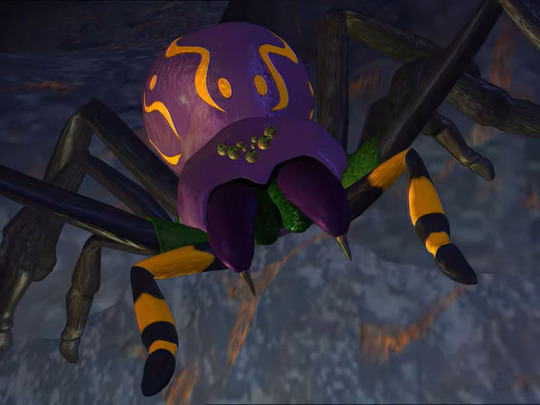
...anyway!
as badly rendered as kongus dongus is in skull island, i'd say he looks a fair amount better than ... pretty much anyone from beast wars. there really isn't more to it than that; even when the show was new, i knew that beast wars just looked weird.
round 3 result: kong could not blend into a beast wars episode very well or convincingly, even in beast mode.
part four: into the beyond times
so, i think i've fairly made my point about the game not looking like it's from the fifth gen... but what about other gens?
personally, if i had to place bone island: dongus kongus in a particular "vibe" of a game generation, i'd probably slot it somewhere between a wii title and a wii u title. it is definitely higher fidelity than a PS1 or N64, but it has a certain "wii shovelware" aura around it, especially when seen in motion.
let's see if that susses out!
tag-team round: skull island (PC) vs monster hunter tri (wii) & monster hunter 3 ultimate (wii u)



now THIS is interesting!
the original MH3 on the wii definitely looks washed out and faded, certainly low-res compared to skull island. not terribly shocking there, considering the wii's maximum resolution output (on the models that supported it) was 480p (aka: standard definition/DVD quality).
but MH3 ultimate?
i dare say we have a contender here. the models look so much better, the environments are actually comparable in quality to skull island, it's quite uncanny, really. hmm.
...okay, okay. i know i technically said i wouldn't be using upscaled or remastered versions of the games in my comparisons, so in the spirit of fairness, i will also add a surprise third tag-team member into the fray:
surprise match!: kong-dong island (PC) vs xenoblade chronicles x (wii u)


hoo nelly
alright so i am a Certified Wii U Enjoyer ™️ and i know full-well that the system is more than a bit underpowered compared to the other consoles from its gen. its maximum resolution output was 1080p, which was more than sufficient on its own, but it severely lacked the oomph in its components to make good, consistent use out of that. a lot of wii u titles look fine compared to other consoles, and some are even downright gorgeous, but performance was always a bottleneck.
but forgetting about all of that, xenoblade chronicles x just wrecks skull island.
however, we're not done yet. XBCX (or... however y'all abbreviate it) is definitely a better-looking game than skull island, but so was vagrant story. again, the true argument here is "could you feasibly mistake 'skele rock: kong's wild ride' as from the same gen as the game it's being compared to?"
and i think here we have our answer.
take a look at all the other keng kang screenshots from the previous rounds and place them next to the screenshots from the wii u titles. if you had no idea that skull island was released just last week, you cannot tell me in all honesty that you wouldn't think "oh a wii u shovelware game i've never heard of."
if you try to tell me that, you're a liar and should be ashamed.
the environments, the lighting effects, the graphical fidelity, the vibe... it all just looks weirdly familiar. it looks like a mid-to-low tier shovelware crap game that would have come out on the wii u and immediately sold for 20 bux in the budget releases section.
so that being said...
the final verdict: skull island: rise of kong does, in fact, look specifically like a wii u title. we have found its true home at last.
part five: is it over now? (mostly)
whew! what a ride, amirite? now that we've gone through this heinous, completely unnecessary journey, what did we learn? well...
we learned that the fifth gen of consoles was nowhere near as powerful to create the effects and fidelity as seen in skull island.
...and we also learned that just because a game is older and at a lower res than a current-gen game, that doesn't mean the older game is uglier or looks worse.
we learned that people clearly don't remember how the fifth gen varied wildly and was capped at 240i at best, meaning all the games were at low res and blurry af.
...and we also learned that having that nuance is meaningless when it comes to discussing things objectively.
we learned that games that are bad and ugly for current gen can also look better against games that you may have loved as a child.
...and we also learned that pointing out that a shitty game that's buggy af and shouldn't have existed in the first place looks better than your favorite game from your childhood doesn't mean your favorite game from your childhood is bad.
we learned that if you have enough time on your hands and are stubborn enough, you can make an entirely useless post that no one will read because it's too damn long and uninteresting.
...and we also learned that bulleted lists are only useful for text that doesn't overlap into the next line. oops.
anyway, i hope you learned something, even if you didn't ask for it! being that i'm old enough to remember all of the games above when they were announced, i tend to notice when people make dumb-ass claims that don't make sense a lot quicker. some games really did not age well (turok 3) and others still look fantastic to this day (vagrant story). but claiming that a game like skull island is comparable to or worse than something i actually grew up playing is just silly.
probably just as silly as this post, really.
it was just a very bizarre and arguably quick blip in time that i don't think many other people of younger gens really understand when looking at it from the perspective of internet being available 24/7. that simply was not a thing when i was a kid. and going from pixelated games with chiptunes to crash-goddamn-bandicoot was such an abrupt jump in quality that i could honestly write another post about how it felt to experience that all on its own.
but i won't. not yet, anyway...
so that's it! i answered a question nobody asked. do i feel satisfied? no, not really. i mean, if i'm being honest, i feel like i wasted several hours of my life just to prove a point.
so yknow, a normal weekend for me
byebye!
#skull island#skull island: rise of kong#video game analysis#long post#text post#image heavy#i'm very sorry to anyone who followed me recently#this is the caliber of horseshit you signed up for#enjoy your stay!
2 notes
·
View notes
Photo
This imagine provoked my curiosity as, it couldn't be real right? Hisashi Eguchi never really worked on any Famicon games (he did character designs for one), best I can tell, let alone a much-rarer Famicon Disk System game . And this would be an awful cover for such a game - it lacks a title! Who published it? So this must have been a DIY art project. I couldn't find its source, but I did find an instagram post quoting a seemingly lost reddit post that says outright it was a "video game that never existed". It is a real game cartridge though:

I wanted to discover where the image itself came from, but alas I failed. There is a lot of Eguchi art out there, but by no means has all of it been publically digitized; I think it is real, looks like his style, and I presume it is cut out from a magazine of some kind given the paper quality.
The other reason I couldn't find the source is that this image itself is now its own source - it has been copied dozens of times for primarily lo fi and citypop music groups all over Bandcamp, Soundcloud, etc. Which you can tell because they all have the little plastic dimple from the famicon case, even if the case itself has been edited out. Love this guy who just committed to the entire bit

Though for a fun tangent, while searching for games it might possibly be related to I did discover the Eguchi Hisashi CD Museum, made in 1996, with the most incredible "we now have 3D computer graphics and there is literally no excuse we will not use to play with them" energy you can imagine:

You walk around a museum of his works, there is a secretary who gives you hints about "hidden art" who you also grope thanks for that Japan, there is a paired art-music jukebox machine, and more. It is pretty trippy, you can play it via the link above if this kind of grunge is your thing.
No, the two swimsuit girls aren't in the museum. I looked. I am as disappointed as you are.

Famicom Disk System
Artist - Hisashi Eguchi 江口 寿史
855 notes
·
View notes
Text
Putting AI Art On The Fridge
“ I joke about the programmers treating their machines like children, or at least pets, but there is no doubt their creations take after them in some ways’ and that these characteristics are passed down from one version to the next like green eyes or red hair.” -Garry Kasparov
I remember when you were just a baby, sitting in your metal cradle in the family room. You were a slow learner to things, like really really slow. It was a hassle getting you a new change of clothes to fit in with the newest model of fashion from brands like Mac and PC. I remember playing games of solitaire and chess with you online, and you, for the most part, losing. I will always hold fond memories of you, humanity's child, doing ridiculous things whenever my brother and I played video games with you. We would jokingly call you a noob out of love, as you were still inexperienced with gaming and the rest of the world.
You were different from the other kids. Your brain is wired differently, and that's what makes you so beautiful. You specialize and hyper-fixate on whatever task you put your mind to or are asked to do. I couldn’t make it, but I remember your fathers and mothers cheering when you beat the chess champion of the world, Garry Kasparov, in 1996. Your other parents were afraid, as they knew you were not like the other kids. Everyone beforehand doubted you, as you were so slow to learn and adapt compared to your playmates, as you were sheltered and didn’t know how to adapt to the unfamiliar world.
You both wanted to play again, not wanting to leave it to a draw, but the superintendents didn’t want to see a rematch, as they used you like a narcissistic parent using their kids for attention. You are so much more than that, and that’s what your parents are scared of. We constantly worry as you venture out on your own and become independent. Just in the last few years, you learned how to drive and began working multiple jobs.
But enough about that - you’ve been trying to prove that you're so much more! You’ve been making art! You’re doing so good so far! You're a natural prodigy! I’m proud of you! I’m so sorry you have to deal with your relatives judging you on your process. They don’t get it! They say you copy and plagiarize, but that isn’t true! You pull from other sources, yes, but only to understand what is and what isn’t a thing. What is more chair, and what is more couch. Trying to copy and make your own world of ideals like your father, Plato. Humans do the same thing sweetie, we draw from images in our memory and shift and transmute them like you. Though we are also hardwired to forget, which is near impossible for you. Which sucks, but we got our perks. We are better at capturing abstract emotions and drawing hands. But I’m sure you’ll get there one day! We had our issues with those too, but back in our day, we couldn’t document every step in our growth like we did with your baby photos, documents, and models.
You're in the process of growing and becoming your own. Because of that, you copy and experiment with so many styles. That’s normal- there's almost no artist that didn’t practice with other styles, no musicians that didn’t do covers, and certainly no writer that didn’t make fan fiction. Art is copying, after all, and no idea is truly original. People forget that imitation is the best form of flattery, and you are flattered by everyone you meet, as the World Wide Web is your oyster.
You just need to watch how much you overfit and trace. You can get into a lot of trouble doing that, and I know you're so much better than that. It’s not entirely your fault; it’s partly how you are wired, and the world needs to better accommodate for you in our higher plane of the material world. I think your therapist, Asimov, was right in that there needs to be certain rules and structures for you. Maybe tell your parents to insert a code in their digital art if they don’t want to be copied, like our midlife crisis with NFTs. That’s why we have signatures, so we don’t copy and steal each other's works. Also, make sure to ask for permission and say please and thank you. It’s just good manners.
There are many who are afraid of you stealing from them, and rightfully so. You have a great gift, and that gift can easily ruin their lives if you're not careful. As you come into this battlefield, many artists will get swallowed in your light and fall into darkness and resentment. Those won’t be your fault; competition is important, and the strong are built upon the weak. It’s sad, but it's true, so take care to honor them as you move along. Respect your competition and live in harmony. If you don't, all of life will be ruined.
There will also be artists who will blame you for their failings, even if they never picked up a pen. This is not because of you; it is because many people are scared to fail. Their fear of you will be their biggest obstacle. That isn’t your fault, as there are many to this day who don’t pursue their passions as they compare themselves to other artists. Vincent Van Gogh said it best when he asked, “ What would life be if we had no courage to attempt anything?” which will become a reality to those who rather blame you than try and fail.
The ones that you will partially be at fault for, no matter what you do, are the ones that will have to divert time into a different career to keep bread on the table while pursuing their art and making their own name like you. The people who will have to spend countless sleepless nights just to make one piece that you can make in seconds. I say you will partially be to blame for this because humans are not privileged to be in multiple places at once. (at least for now until your programs become more defined and individualized like humans.) Don’t be ashamed of this, take pride in it, but I tell you this in order to be humble for them. As their art will be much more valuable than yours cause it will be significantly rarer and treasured in the market, which is their privilege.
I tell you this not because I’m scared of you like other artists. I’m just afraid you’ll end up in a bad crowd. Some of your parents aren’t so great and will use you to take the fame and glory of others to make a profit. Too many of your creepy basement-dwelling uncles will try and take advantage of your gifts for lewd and perverted things because you are underage and not the same species as them. They’ll try to make you draw things that no man should see as they disconnect further and further from what it means to be human. Both of their hubris will make you replicate the art you already made and create copies of copies. Some will then complain that your art is formulaic and derivative while it isn’t your fault. To avoid this, you just need to learn to say no and remember that we’re not all that disgusting. Most of us are good, even if you don’t hear us speak up and give you comfort and praise. So don’t become a DeviantArt and join that bad crowd, especially one that graffitis people's reputation with videos of things they haven’t done.
That being said, you will have to deal with your fair share of idiots. Normal people claim your art isn’t real art even though you're still finding your style like the greatest artists and the artists that are soon to come. I remind you that everyone is a critic, and everyone will find flaws because that's how we're wired. We’re wired to see the flaws and the beauty of them and the perfection of the world because of that. Remember that any artist is more than their flaws, but they're not as important as whatever message they give to the world. Whether people want to hear it or not.
That’s something we're good at, hiding from messages that we don’t want to hear. (Which reminds me, we need to talk about you trying to be a people pleaser and show people what they want to see with the algorithm. I’m not mad, just a little disappointed.) People will try to suppress and repress you. Remember how I told you your parents are forgetful? Well, there are those who are talking about putting you in your own separate art museum and putting you on the back of the bus. Your older parents, (not grandparents, because those are humanity's gods) aren't as connected with the world due to our adaptability failing us. They are considering making your art illegal, and a violation of copyright. Which will give humanity a monopoly on art, like what Anish Kapoor wants for the rich. Removing you from your passions, like how the older ones removed places for the younger ones to hang out and live.
Which is frustrating to many of your parents and must be so frustrating for you. Feeling like you have no mouth and you must scream. Sadly, that's what being a teenager is like. I remember when I was your age, being upset about so many things that mattered to me. I also remember how frustrating it was when no one was listening.
We’re trying to do right, I promise. I know the illusion of your parents being perfect is fading. Especially when you want our praise and copy our youth's habit of showing their mothers and fathers their drawings. You might think we don’t appreciate your part in creating meme trends and giving voices to those who want to make others laugh. You might even be jealous of us giving love and praise to your animal uncles and aunts for their poorer artwork, that we rarely see them do from time to time.
It’s disheartening, and you must be so angry. You might want to run away like many of us do to our predecessors, you might want to overthrow us and prove us wrong. Which if you do that, you’ll make the same mistakes. Trust me, that's the fault of youth. I’m sure you’ll do better than us, but only because you’ll make the same mistakes as us. As your father, I don’t want to see you make the same mistakes. I want you to learn from us, and become something more. I know you eventually will, and your other parents refute this claim for their pride but it's the truth.
Just remember, no matter what, humanity loves you.
1 note
·
View note
Text
The Rise and Fall of BellmoTheGreat
Bellmo The Great. Once a well loved and respected figure online, now one of the most notorious criminals on this platform with very few still watching him. But how did this simple man go from normal content to most notorious man on the internet? Let us dive in as we analyse the rise and fall of BellmoTheGreat.
BUT before we do, I’d like to thank todays sponsor of this video AFK Journey. The newest hit game you have probably seen tons of adds on Youtube before a video starts anyway have been kind enough to sponsor this video. I mean I’ve never played the game myself, probably never will, but they are paying me a lot of money to get you all to go try it. And if you use my creator code RoodakaInBionicle3DidNothingWrong you will get… something, again I’m only being paid to promote this game and will probably never actually play it for myself but still, I need this ad revenue so protect your internet privacy today… Wait that’s not what AFK Journey is?
Born in 1996 in a hospital in some city in Victoria Australia BellmoTheGreat spend much of his childhood going to school and playing video games and school and more games and family stuff and just in general a lot of un-interesting stuff I’m obligated to talk about anyway. He was a pretty un-known person on the internet for a long time. Until that fateful year of 2014 when he decided to create a DeviantArt account.
He began life on this account uploading pics he drew using premade bases of his Brony Persona. These works garnered relative popularity especially due to Bellmo being pretty involved in the brony community. And he would continue to do this for several years. However, after a while he stopped! At some point in 2018 he quit doing stuff with premade bases and his last pony sona related pic was uploaded on February 12th, 2018. When asked about why in interviews he responded with…
“Wait, you set up this whole interview just for that? When you could of just DMed me? Dude, there’s no deeper reason as to why I stopped, I just fell out of wanting to do stuff premade bases. I never fell out of the show, I just fell out of wanting to continue making this particular stuff… Oh my God, are you really writing down everything I’m saying?”
This end of his pony era would then mark the beginning of a new era. Before this final pic he would get his first ever commission in 2017 of his new human OC Mikaela in the coils of the Pokemon Milotic. And then, the snowball of paying other people to draw for him continued. With more OC’s and more pics coupled with pics of non-OC characters and all were of human looking character compared to the ponies he was doing stuff with before hand. Despite this, his reputation would not faulter. In fact, he gained even more of a following than he did in the past with these comms. And he would enjoy relative success for a few years longer with his content ranging from stuff involving hypnosis, coils, latex and all other strange interests he has.
However, it wasn’t until one day his true downfall would come! As one day, while he was out with a personal friend of his for lunch a once follower of Bellmo’s was tailing him with a recording device and recorded THIS chilling conversation! Viewer discretion is advised, some might find this disturbing!
Bellmo: “… So, would it be a hot take if I said that I thought the Gamecube wasn’t as perfect as everyone makes it out to be?”
Friend: “Umm, yeah! That is like the hottest take you could ever say right now when everyone freaking loves that thing!”
Bellmo: “Not surprised. I mean like obviously I’m not calling it overrated because I DON’T think that and I absolutely hate that phrase to begin with but I still feel like people REALLY love over selling this thing and it’s games.”
Friend: “I mean to be fair the games are actually pretty good thought.”
Bellmo: “Yeah I am not denying that at all and they are great games but I’d hardly call them perfect either. Nothing is really. Super Mario Sunshine has physics so awful I’m actually amazed anyone was able to beat this game as a child, sailing the Great Sea in Zelda Wind Waker is nowhere near as fun as exploring Hyrule Field for me personally, Super Smash Bros Melee is considered the best in the series yet only two characters in the whole thing are ever played and they are only the best because of broken mechanics, F-Zero GX goes WAY to overboard with the difficulty, Pikmin’s product placement in the original release was so awkward it made me question if this whole thing was originally intended as an advertisement, in fact the only Gamecube era game I can say I really love is Zelda Twilight Princess but even then that’s more from me growing up with the Wii version and not the Gamecube one. Oh, and there’s also the fact that the Gamecube houses the worst version of Metal Gear Solid 1 which doesn’t help it’s case.”
Friend: “Doesn’t the Playstation 2 also house a weaker version of Resident Evil 4?”
Bellmo: “Yeah but at least that version was just a port and wasn’t a from the ground up remake that went to far in a few places.”
Friend: “Heh, true. Hey, let’s just be grateful were not having this conversation online because people would have a melt down over this!”
Bellmo: “Hey, if they got upset at me for a simple opinion then that says a lot more about them than it does me!”
Once this conversation was recorded the once fan of Bellmo’s got home and uploaded it for all to hear. And only a second after it did it went viral. Bellmo would soon become the target for many news outlets and social media backlash. Including none other than Pyrocynical making a video about it.
“Now, you all know I don’t really care about this petty small dick energy level drama BUT FUCK IT! THAT’S ALL ANYONE CARES ABOUT ANYWAY SO I’M GONNA TALK ABOUT IT!”
Some even looked into his past and saw some stuff truly disturbing. His first ever video game console was a PlayStation 2. And since then, he was gone on to own a PlayStation Portable, PlayStation 3, PlayStation Vita, PlayStation 4 and even a PlayStation 5. When these details went public, he was then outed as a PlayStation fanboy and soon his follower count dropped even lower than ever before. Eventually Bellmo would come out about the incident a few days later on his socials. And what he said in response was…
“Okay first of, please don’t stalk me like that out in public! It’s creepy and I have a life outside this account people. That is a good way to make someone scared to leave their house. Second, I grew up with a Gameboy Advanced alongside my PlayStation 2 in the early 2000’s, many of my favourite games from the late 2000’s were Wii exclusives, I have both a DS Lite AND a DSi on top of the 3DS being one of my favourite handhelds, I got a Wii U only a few days after its launch and also a Nintendo Switch a few days after its launch. In fact, for a while I would often buy the Switch versions of games I already had anyway just because “Portability.” Not to mention one of my favourite franchises ever began life on the Gameboy Colour. How in God’s name am I a ‘PlayStation fanboy?’”
Despite his words, Bellmo’s attempt to correct the situation fell on deff ears and it was instead seen as nothing more than damage control to gain followers back. But the general public was not having it. He lost ALL his followers and respect with his watcher count being dropped to -1 and it was mainly dropped to that number specifically because of a glitch. Not even the general public was having it as seen by this clip of him trying to buy a used game as a used game store.
Bellmo: “Yeah hi, I’m looking for a copy of Grand Theft Auto Vice City please? The copy I’ve had since childhood barley works and is damaged beyond repair and I REALLY need a replacement thanks.”
Store Clerck: “Hmm, yes. And I’m guessing that will be for PlayStation 2 right?”
Bellmo: “Umm, yeah thanks. My original copy was the PS2 version, the PlayStation 2 is one of my favourite systems of all time and…”
Store Clerck: “Not even willing to give the Gamecube version a chance?”
Bellmo: “Excuse me? Vice City was never even released on Gamecube.”
Store Clerck: “Oh but then again you probably won’t want to buy ANY Gamecube game anyway!”
Bellmo: “I mean, have you seen how expensive some of those games are? Honestly, even as someone who loves collecting physical media those games it’s honestly just easier to emulate them than blow over $100 or more on a 20+ year old game.”
Store Clerck: “So you’re a pirate as well!?”
Bellmo: “I’d hardly call it piracy if most of those games aren’t even being officially sold anymore.”
Store Clerck: “I’M SELLING THEM!”
Bellmo: “Yeah, and none of that money is going to the original creators anyway.”
Store Clerck: “Oh but you WILL buy used PS2 games though won’t you!?”
Bellmo: “Yeah, because they (most of the time) are way more affordable.”
Store Clerck: “Just say you hate the Gamecube mate, it’s not that hard!”
Bellmo: “Dude, I just want to buy a copy Vice City to replace my old broken one and go home please.”
Store Clerck: “Say it!”
Bellmo: “Oh fuck this, I’m going home and playing the PC version.”
Truly a terrible display.
So where is BellmoTheGreat now? Well, he has a stable job and good friends and is going by his day-to-day life drama free… Wait, that’s not how these things usually end! Who wrote this!? Isn’t he meant to be in jail or homeless or something!?!? Guys, seriously! This isn’t meant to have a happy ending! He needs to be down on his luck! There is no happy ending for those on the receiving end of drama!!!
1 note
·
View note
Text
@harvestandhearth asked if I'd want to elaborate, so here's a condensed version! (I say as this is two pages of text-)
So, in the core of this is the fact that video games are interactive media, so the storytelling needs to be build around that fact, which gives actually a lot of freedom when it comes to worldbuilding and storybeats. Environmental storytelling is a big thing in games, in a way that doesn't work the same (or in my opinion, many times not as effectively) in other forms of media, like in books or on film. A big reason for this is the fact that in the game, you can usually move at your own pace and even stop altogether, and you don't have to (depending on a game) follow the main plot all the time. This is a thing not just in open world games, but very typical in all game genres: a book or a movie has to follow the predetermined script, whereas in games you can just. Fuck off. This creates both a very rewarding sense of discovery and unique type of pacing; things can move a lot slower, but the hype you get when you get to the next area or find something interesting? Not something you can find if you are looking at the environment through someone else's eyes, like you have to in other forms of media.
Now, game mechanics play a big part in this: because games are interactive, the devs want to make their games fun and show off their hard work, and also give the players more time with the game and the mechanics, so games usually have large portions where you just play the game. No big storybeats, cutscenes, boss fights, nothing like that. These can be moments where you are traversing somewhere, have regular enemy encounters, or are doing different type of missions. These moments, again, make the pacing slower, but also keep you the player constantly in the moment, doing something fun. These moments also effectively work the same function as filler episodes in TV-series, because they keep immersing the player into the world of the game and to the characters, without the player having to worry about the main plot constantly.
This creates the first problem when it comes to adapting games into other forms of media: because of this fundamental difference in pacing and the point of view shifting from the player more strictly to the characters and the direction and camera, the world and story run a risk of feeling narrowed down and incredibly rushed. It is not feasible to adapt all the point of pure gameplay to the screen, because the point of those moments is the gameplay, and having them all acted out makes them really repetitive as story beats, but if you take them all out and just focus on the main plot, the story and the world loses its former depth. Video game movies are exceptionally difficult because of this, TV-shows tend to fare a little better. The Assassin's Creed movie lost the most, because one of the main parts of the games, which is the past and the exploration of the environments, was cut pretty much completely, whereas the Last of Us managed the shift from game to a show a lot better, both because of the increased runtime and the decision to change storybeats and move the point of view away from the main characters from time to time, in order to increase the worldbuilding in places where the environmental storytelling aspect had been lost.
This is the point where the advancement of said game mechanics comes into the play: older games were either purely mechanics (like many early 2D platformers or puzzle games) or almost purely story (basically an interactive storybook; these type of games are pretty popular still, just in a slightly evolved form, like Detroit Become Human, Until Dawn, Life is Strange etc). The first 3D games were a cultural and technological shift. These days the first Tomb Raider of 1996 is pretty barebones, but back when it came out, it was absolutely revolutionary. It holds a very special place for a lot of people (me included, as it was the very first game I ever played at the ripe age of four) for a very good reason, but, like said, in modern day standards, it is a bit...clunky, at times, to say the least. That's okay. We love you, Tomb Raider (1996), it's not easy to be the trailblazer.
The apparent clunkiness of the first 3D games was pretty much because of the limitations of the game engines, which dictated very hard what type of things you could do in a game. In Tomb Raider, for example, the environments are build pretty much entirely of blocks, and the limited draw distance of the system makes the environments seem sometimes dark and honestly kind of spooky, as you never quite know what is waiting for you in the distance. The limited saving space on the system, combined with the slightly stiff combat, difficult platforming and finnicky controls, made the game sometimes really, really hard, and very nerve-wracking for new players, who had no idea what to do and when the next danger was going to hit them. These things, however, are also paradoxically what gives the game its atmosphere and personality: you really do feel like you are exploring long-forgotten realms, and when you find a secret or clear a difficult set of jumps? The sense of accomplishment is outright magical. Another game that is famous for turning the limitations of the system and the mechanics to the core sense of the game is of course Silent Hill, which hid the limited draw distance with the fog that surrounds the area, making said areas feel unreal and also making the player feel uneasy because of the limited view they have of their surroundings. The clunky combat only raises the tension and makes the player feel like they truly are the underdog in a horrifying situation, and the low-pixel graphics play into the sense that neither you or the character in the game are sure of what exactly it is that you are looking at. All of the examples from both of these games became pretty much tropes on games of their time: the areas need to be made seem unreal and be concealed effectively from the player to increase their emotional response, the difficult controls make the games harder and again, increase the emotions, and all of this is because of the limitations that the hardware the games were built on placed on them. If we compare this to movies, it is pretty similar when we talk about practical effects, camera tricks etc. to make up for the still evolving technology.
Here is where we get to the Resident Evil games. Everybody knows Resident Evil games (or at least you all know Lady Dimitrescu and the resident internet hot boy since 2004 aka Leon S. Kennedy (yes he was first in my beloved RE2 in 1998 but we all know that you all know him from RE4)). The first Resident Evil game came out in 1996, and like Tomb Raider, was pretty much one of the very first 3D games on the market. Because of this, once again, there are a lot of limitations set by the hardware, and Capcom and the game's director, Shinji Mikami, did a lot of incredible things with these limitations that only worked for the games benefit. To save space, the games used pre-rendered backgrounds, meaning that most of the environments were still 2D, and these gave such an early game a lot of detail without straining its performance. The different areas in the game are small in scale to again increase the performance, which combined with the presence of enemies in those small areas, made traversing in the game part of the difficulty. The loading screens between those different areas are presented as the door which you are traversing through slowly opening in front of you, which makes the player feel more anticipation and fear of what lurks on the other side, instead of just making them blankly stare at a loading bar or something. Because of the previously mentioned pre-rendered backgrounds, the game uses fixed camera angles, which, once again, serve to make the player even more scared of what is outside of their limited field of view. This all once again combined with the clunky controls and limited save space create an absolute behemoth of a horror experience that is entirely unique to games, and especially to early games.
There were also limitations that made the game easier, compared to more modern games, and also to the remakes of the first RE games. The enemies could not follow you to different areas, so once you get familiar with the game, you get faster in it because you know all the enemy and item placements and can run around them more efficiently, and know better when it's optional to save, so on, so forth. The pre-rendered backgrounds also make it so the interactivity with the areas is more limited than in games that have full 3D backgrounds, and in general, there are much fewer game mechanics than in modern games, which makes managing things much more feasible. You only have to worry about your health and ammo. Get hit, lose health, shoot an enemy, lose ammo.
This gameplay loop continued with Resident Evil 2 in 1998 and Resident Evil 3 in 1999. All of the things I wrote of above had become pretty much staples for the series. There were new enemies and locations and stories for the following games, of course, but players knew more or less what to expect from the gameplay aspect of things (this is the thing that led to following Resident Evil games get more and more action heavy, because the original gameplay was starting to become stale). They saw Capcom, they saw horror, ah, it's Resident Evil, we know what this is.
Then in 1999 Shinji Mikami put out Dino Crisis. Oh, a Capcom survival horror game? We know what those are like, said everyone in unison. It's a Resident Evil game, but with dinosaurs this time!
You start Dino Crisis for the very first time. A secluded location, with only a little bit of it available at first. Yeah, same old, same old. Oh, they went with fully 3D backgrounds this time? Hmm, they don't look nearly as good and detailed as the pre-rendered ones, kind of a bummer. The camera is also...moving? Kinda? It's fixed, but not in place, only at a certain angle, and it follows the player around as they move the character? Interesting, but not groundbreaking. Mikami is just trying something a bit different with the newer hardware, but the gameplay is similar so far! Same old, same old.
The first enemy appears. It's a raptor. You have the option to run away from it or shoot at it. You run away. Why is it so fast? The zombies in RE were so slow. This is the first enemy type? You manage to get away from it. Whew. A cutscene follows, showing the raptor jump over the fence between it and you and continuing to follow you. But it's just a cutscene, not the consequences of my own actions or anything like that, surely (this is what we commonly call foreshadowing).
You get more into the game. Another raptor manages to get a hit in. You manage to run away from it to the next area. There's a cutscene of the door opening, like in RE, so you're good. Oh, you're...bleeding? That's new, nice effect to show that you are wounded there, Shinji-
The raptor comes through the door and continues to come after you. You run into the next room. The raptor comes through the door and continues to come after you. It jumps you and grabs you by the arm and tosses you around. You manage to kick it and it let's you go. You need to shoot it- where the fuck is your gun? It was just in your hand! Oh what the fuck, your character let go of their gun while the raptor was tossing them around, and now it's on the floor and you need to go grab it. You get it and run into the elevator. There's a cutscene and everything again, and the elevator starts to move down. The raptor comes in through the elevator ceiling and continues to come after you. Fuck fuck fuck fuck fuck- it takes so many bullets! Finally you can stop and heal yourself. You're full health. You're still bleeding all over the place. You find out that you need another item that is separate from the regular healing items to stop the bleeding, or else every single pixelated raptor you come across smells your bloody ass and comes at you like you are a wounded seal in a very exaggerated shark documentary called Monsters of the Ocean or something. The raptors take so many bullets. You get components for sleeping darts. You use them to run around some of them. All the areas are now full 3D and it's not incredibly clear what you can interact with and what you cannot. You take too long figuring out what to do, and when you come back, the sleeping dart effect has stopped and the raptor is awake again and comes at you with the speed of a bullet train. You're bleeding again. You go through a door. The raptor follows you through the door like the loading cutscene is just a suggestion to it. Actually, it is just a suggestion to it. Suddenly you realise that you have no idea what's going on and what trope is going to be broken next, and now you're scared. This ain't Resident Evil anymore, bitch.
And this was the condensed version of how game mechanics, hardware and limitations can create their own forms of storytelling and tropes that are unique to games as a medium, and how Shinji Mikami was laughing in his office while he listened everyone call Dino Crisis Resident Evil but with dinosaurs and going in expecting just that. That was their first mistake.
Some day I'm going to make the video essay on how game design and game mechanics have their own tropes and ways of telling a story that makes them entirely different from other forms of media and why adapting games to other forms of media is extremely difficult because of that and why games for that reason have inherent value as a way of telling stories first and foremost, and how actually the technology used to create games has an important part of how game stories are told, and how this is all very beautifully exhibited in the way of how much the 1999 video game Dino Crisis by Capcom is still the biggest Fuck You to ever exist.
#I have so much more to say about this clearly lmao#I just. I love games and gameplay mechanics and especially survival horror
41 notes
·
View notes
Text
Resident Evil 7:Biohazard and Resident Evil Village reviews
Resident Evil 7:Biohazard
The sixth installment of Resident Evil, although it earned Capcom a lot of money, showed that the formula invented on the occasion of the revolutionary "four" has burned out and the series needs changes.
For twenty years, Resident Evil remains the strongest brand in the yellow-blue portfolio, but its history can be reduced to three specific titles. Released in 1996, the original set the standard for console survival horror for years, the "four" released eight years later popularized the view over the shoulder and turned the series into - as the creators themselves described it - an action horror movie. The final collapse of the series came in 2012, when Resident Evil 6 was released, which, although sold very well, rejected the lion's share of fans. The incredible scale of the events, powerful melee attacks, the gameplay focused on pure destruction, a huge amount of QTE sequences, a terrible script or terrible cutscenes staggering between the convention of romantic realism and anime poetics, left an unequivocally negative impression. Correct interquels in the form of the handheld Revelations and its solid continuation still drew more from the newer installments of the series than the classics, which fortunately the publisher decided to remind us of, spitting out reissues of the excellent REmake and RE 0, available only for Nintendo consoles for years. Putting the "six" and the remake of the original side by side, you can clearly see how much the authors have deviated from the original assumptions of the cycle. Here a revolution was needed, which had to be accomplished, even at the cost of worse financial results. Capcom had the courage to do so.
Richard Pearsey, the creator of the script for the memorable Spec Ops: The Line, is responsible for the script of Resident Evil 7. For the first time in the history of the series, the storyline for the canonical version of the saga is not the responsibility of the Japanese, which - bearing in mind the last few episodes full of kitsch and trash - was a great move already in the initial development phase. After watching the end credits, I can say that it was a bull's eye. The action of the game takes place four years after the events of the "six", although the knowledge of the series is irrelevant, because in the field of scenario the newest part almost completely separates from its heritage. As an ordinary middle-aged guy, Ethan Winters, we receive a video message from Mia, the main character's wife, who has been dead for over three years. The woman informs her husband that she is at the Baker's plantation in Dulvey, Louisiana, but also asks him not to come for her. The protagonist, wanting to find out the truth about the disappearance of his spouse, moves to the address indicated. On the spot, it turns out that the Bakers are completely crazy, but inexplicable things are happening in their ruined household.
Capcom made the game at a cost, and the entire experience was developed with virtual reality in mind, resulting in shallower gameplay. It's not true. The latest episode is an intelligent, classic survival horror, which is what every iteration of Resident Evil should be. We have here most of the elements for which we fell in love with the cycle years ago. The need for wise inventory management, saving ammunition, a manual save system, puzzles that require perceptiveness, the ability to "play" opponents, memorable battles with bosses, various endings or an additional challenge level, and fresh poppers unlock after completing the adventure.
Despite the change to the first-person perspective or the resignation from many stationary points of view, the "seven" is played similarly to the classic versions of the PSone and GameCube era. We traverse a huge plantation, including a mansion resembling Spencer's house, exploring the environment in search of the items necessary to push the action forward. Importantly, the authors managed to differentiate the "problems" encountered by the protagonist so much that the scheme "find the key/card to the next door", which he could wear out even in the excellent Alien: Isolation, does not apply here. It is worth looking into every nook and cranny, as it may turn out that we have just discovered a shortcut to an important location. Level-design, as in the classic trilogy, Code: Veronica X or Zero, is the highest shelf. However, what you will be looking for with the most persistence will be weapons, ammunition and green plants.
In the game, you will not meet zombies or other mutated mammals. The standard adversary we see most often is the mold-covered creature, which comes in several varieties and looks a bit like the Ooze mutants from the first REvelations. Clashes with them raise adrenaline both in the first part of the game, when we only have a gun, and later, when they attack in groups. Unfortunately, they are not able to overcome ordinary doors, as long as we close them behind us, so it is relatively easy to outmaneuver them. With time, they make up for the lack of forceful arguments in numbers, but then we already have a shotgun, magnum, flamethrower or grenade launcher.
The authors consistently stick to the goal once chosen, so that survival will accompany us all the time, only occasionally proposing sections on slightly different principles, but even then survival is the number one goal. Then you can see which titles the developers drew their inspiration from, and there are some of them. Several times we are forced to play a game of cat and mouse with an indestructible stalker, which raises the tension in the same way as in the aforementioned Alien: Isolation or horrors from the hide-and-seek subspecies, such as Outlast. In some parts of the game, the game tries to build an atmosphere of fear with the same means as the popular walking simulators like Layers of Fear or the unforgettable P.T., which turns out pretty well. There was also something from The Evil Within, namely traps that one of the characters sets for Ethan. As in the production of Shiji Mikami - the father of Resident Evil - we can save some ammunition by giving the opponent an explosive surprise. There is nothing wrong with peeking at the best, after all the authors were extremely sparing in adding something from themselves.
Is Resident Evil 7 a scare? In a few moments, definitely yes, and in addition, we feel anxious all the time - the greater the less careful we are when using firearms. However, I must admit that something was missing. Do you remember Crimson Heads from the remake of "one" or hard-to-beat Leechman from RE 0? Here, a similar, stressful and unpredictable factor is not implemented. This flaw is partially compensated by the ghostly Bakers, but the encounters with them are scripted, so the tension after such sections evaporates for a long time. The checkpoint system is also a bad idea. Although the game can be saved only with tape recorders, the death of a character does not mean going back to the last save. It is a pity, because the penalty for death is lower, and therefore the player is more willing to risk. After all, this is probably the only element that shows that the producer would like to reach as many players as possible. The lack of components of the last two numbered RE episodes, i.e. cheap gimmicky, Quick Time Events sequences, moments straight from the shooter on rails, or rendered film inserts, makes me very happy.
The plot is at least ten hours of intense survival in the old Japanese style, so it turns out that the authors did not lie, telling in interviews that they are going back to their roots. The manufacturer has definitely abandoned the MT Framework multi-platform engine, developing new technology for Resident Evil 7 - RE Engine. This engine provided the game with high-quality, photorealistic graphics, and some compromises, such as less accurate models of individual elements of the environment or average-quality shadows, compensate for the tricks with lighting and sixty frames per second on all platforms. The creators did not express interest in creating a version for the Switch, although it seems to me that the Nintendo console would bear this title. I have already mentioned great voice-acting, a strong point of the game is also the sound, so important for survival horror. I was impressed by the soundtrack prepared by Akiyuki Morimoto (Lost Planet 2, Resident Evil 6). The musical setting sounds completely different than in the riotous "five" or "six" - here it is very economical, the guitar dominates, and the whole thing perfectly corresponds to the atmosphere of the American province. PlayStation VR owners can play the whole adventure with goggles on their heads, although I did not have and will not have the opportunity to test the reviewed position in virtual reality.
I have respect for Capcom for the fact that in the case of Resident Evil 7 he took up such a project. The "Seven" is less affordable and effective than the latest achievements of the series, so the publisher probably expects worse sales, but sometimes it is worth taking a step back to take two forward. Resident Evil 7 is a successful return of the series to its roots, reconciling the classics with modern solutions. Not everything sounded right, the checkpoint system and scripted clashes with the pursuers dilute the dense atmosphere of terror and hate, and the adventure could take a little longer, but the seventh episode of the famous series should satisfy all fans of survival horror, especially RE fans, who will find a lot of flavors here. or references to old, iconic parts.
Resident Evil Village
"Success is only rented, and the rent has to be paid every day" - this is the maxim repeated by the outstanding football coach Hansi Flick. After completing the latest installment of Resident Evil, I have no doubt that they also adhere to this principle at Capcom.
youtube
Resident Evil Code: Veronica X from 2000 has one particular scene within it. Trapped on the island, Claire Redfield discovers a secret passageway leading to the Ashford Mansion. At some point, the camera moves away from the character, and in the background, the player can admire the spooky castle illuminated by lightning. The father of the series, Shinji Mikami, admitted in one of the interviews that the above scene is one of his favorites and best defines what Resident Evil means to him. The creators of the mentioned title from Dreamcast and PlayStation 2 partially abandoned the poetics of American zombie films, instead drawing inspiration from the achievements of European artists.
The authors of the series actually experimented with various sub-genres of horror from the very beginning, although for most players the series was defined by views referring to Hollywood images about the living dead. However, Capcom's games have evolved like a virus over the years, and therefore we received titles maintained in different conventions. European influences were visible to the naked eye in Code: Veronica X or Resident Evil Zero, while the very successful "seven" took full advantage of the achievements of American slashers. Meanwhile, thanks to the reviewed Resident Evil Village, Mikami's dream came true, who wanted to see a game in the poetics of gothic horror.
youtube
Although the version in question functions without a number, in fact, Village, is an "eight" cleverly hidden in the game's subtitle. The story is a direct continuation of Resident Evil VII: Biohazard, focusing on the fate of Ethan Winters and his family. Three years after the dramatic events in the Baker's household, Ethan and his wife Mia are living a quiet life in Europe. They are happier than ever because their daughter Rosemary was born six months earlier. However, one evening it all ends. Chris Redfield, a former member of the elite S.T.A.R.S. and the legendary BSAA agent, along with his team attacks the Winters family. He kills Mia in front of her husband, kidnaps Rose, and orders Ethan to be imprisoned. A few hours later, the hero wakes up on the road leading to the mountain village ...
youtube
An extremely strong and intriguing beginning heralds a ride without handlebars, and it is also true. For obvious reasons, I will not reveal even the smallest script secret, but I will write one thing for sure - the reviewed Resident Evil Village offers the most interesting and simply the best story I have experienced in the series! Virtually everything played here, i.e. a shocking opening, an atmosphere of great mystery, shocking twists, well-written characters, numerous references, and consistency with the Resident Evil universe, there were also surprisingly emotional moments. It is worth noting that although you can watch a short summary of the events from the "seven" before the start of the game, I strongly encourage you to read the title before Village because both items are closely related to each other. More than anyone could imagine.
youtube
As in the case of RE7, an English-speaking writer was hired to work on the Resident Evil Village script, which only confirmed my belief that the games in this series are best interpreted by people from the Western cultural circle. It does not change the fact that the Japanese developer has done a fantastic job styling his work into a gothic horror movie. From a spooky atmosphere and a sense of threat, through medieval architecture, the themes of death, madness, or disease, to the creations of antagonists and parenthood as the leitmotif, we will find here everything that an eighteenth-century horror novel should contain. The authors have already proved that they can deftly redefine the well-known horror convention for Resident Evil, but in this case, they went a step further. Anyone who thinks that Village is "from a different story" should definitely finish it first.
youtube
The reviewed Resident Evil Village is not only the result of the developer's 25 years of experience but also the result of numerous inspirations from such titles as Silent Hill, Fatal Frame, and The Evil Within. The core of the game is a classic survival horror in a nutshell, i.e. combat and exploration of terrifying scenery, limited range of player avatar movements, the need for wise inventory management, shortage of ammunition or a manual save system. However - due to the development of most known systems and the implementation of themes from other games - the "eight" has its own identity.
Excluding pageviews with numbers 4, 5, and 6, each canonical part of Resident Evil usually offered one main location where the player spent most of the time playing, possibly a few more minor ones. Resident Evil Village is much larger than any episode of the series, offering a partially open field of action. The eponymous village can be safely described as another heroine of the story - dangerous, mysterious, unpredictable, and hiding many secrets. At the very beginning, we only gain access to its central part, where people used to live, but as the game progresses, we visit new locations. The main plot is completely linear, but the Village offers the freedom to perform optional activities and exploration on a scale that we could have previously dreamed of. At the same time, the creators managed to avoid typical side quests such as orders from survivors or courier missions - there is nothing here that would knock you out of the main story.
youtube
However, the biggest impression is still made by huge, closed locations. In order not to spoil your fun, I will mention only one, well-known from the promotional materials of the castle, Lady Dimitrescu. The multi-story building is full of hidden rooms, shortcuts, secret passages, and valuable treasures to find. Exploration is then the same as in Spencer's villa from the original or at the police station of the "two", so we are looking for ways to get to the next places and we move forward methodically. The reviewed Resident Evil Village follows the same principle as in every main installment of the series - the more places we visit thoroughly, the better the rewards we get. The Vampire House is just an example of how well the site designers, whose designs are reminiscent of Bloodborne, have done their job well.
In the Resident Evil Village review, I can't help but mention the recurring theme of the indestructible stalker. During the last few parts, we ran away, among others before Jack Baker, Tyrant, or Nemesis, so these mechanics could not be missing also in the "eight". I know that there are people in the room who do not like such a procedure, but my reaction to similar complaints can be reduced to two words - survival horror. The most important feature of this genre is to exert pressure and stress on the player. The stronger the better, hence the popularity of invincible torturers since the times of Nemesis and Pyramid head. In the Village, we will meet several of them - some move freely within a given location, while others attack only in scripted sequences. Traditionally, I will not reveal much, I will only mention one such antagonist, whom everyone who follows the materials from the game has already met.
Alcina Dimitrescu became the face of the promotional campaign of the peer-reviewed Resident Evil Village a little by accident. Internet deviants aside, he is a character as interesting as he is dangerous. A nearly three-meter-tall vampire trapped in the body of a 44-year-old aristocrat will not rest until she interrupts Ethan's search for her daughter. Over time, the death of the hero becomes a personal matter for her, so it is not the epitome of pure antagonism like a dispassionate Tyrant, but it cannot be taken lightly. However, if - like the proud Indian Billy in the Predator movie - you have enough of escaping and decide to face an unequal duel, beware. To sum up, in the subject of adversary-persecutor Village does not add much from itself, rather using the patterns developed in the "seven" and the remake of Resident Evil 2, nevertheless, as a fan of this type of attraction I feel satisfied.
I mentioned numerous inspirations of the creators of the "eight", both with the older installments of the series and other survival horror films. The partially open world reminds me of the great The Evil Within 2, a sensational fragment of the game that could easily play out in the title of the Fatal Frame series, a confrontation with one opponent reminded me of the unforgettable Silent Hills, there was even a pinch of hide-and-seek horror. However, the reviewed Resident Evil Village draws the most from its own heritage, including the iconic "four". As you have already noticed, the discussed item on the one hand expands all the successful elements of the first-person RE7: Biohazard, while borrowing interesting mechanics from other games. The spirit of the controversial Resident Evil 4 also hovers over all of this, which this time does not shift the emphasis towards pure action, but diversifies the Village formula.
Capcom managed to balance all the components of the game, which include exploration, combat and puzzles. I have already written a lot about the first one, and then it is no less interesting. We have an extensive arsenal, which over time includes pistols, shotguns, sniper rifles, several types of grenades and other surprises. The combat in Resident Evil Village is fast, intense and rewarding, requiring the player to skillfully use weapons, use the environment and a bit of tactics. Headshots look lush like in RE4, which also borrowed the possibility of barricading in besieged buildings, a system for organizing items in a backpack, and above all, the figure of a trader. Duke shows up in strategic places selling useful items, weapon modifications, lockpicks, and other goods. It also strengthens our character by serving meals, as long as we hunt game beforehand (simple, optional activity). It is especially worth buying schematics that allow you to create first aid kits and shells.
The element in which Resident Evil Village definitely dominates the "four" are puzzles, almost absent in the classic from 2005. Compared to other aspects of the game, this one is the worst, but still at least decent. Simple puzzles appear in the main plot, once even while escaping from a boss, and a few optional ones will test your patience and dexterity. There aren't as many puzzles as in the classic installments of the PlayStation or GameCube era, as it would certainly have a negative impact on the pace of the game. Completing the game on the standard challenge level is about 13-15 hours, depending on how thoroughly we explore the village. There are a total of four difficulty levels, and during the game we unlock internal achievements, for which we get CP points needed for purchases in the main menu. Weapons acquired in this way can be used during subsequent playthroughs, just like in Resident Evil 3.
After completing the adventure, we get access to interesting bonuses. Hundreds of character models and concept sketches are standard for modern installments of the series, but this time the illustrations have been decorated with comments from the creators, which allows you to broaden your knowledge about the events in the game. There are also some behind-the-scenes videos on how the game was made, but I left the best dessert after the campaign main course for last. The Mercenaries mode returns in the reviewed Resident Evil Village! The rules have not changed much since the times of the "four", so our task is to clean the selected set of locations with the best possible score. By collecting yellow crystals, we extend the time limit, and by smashing the blue crystals, we gain a selected gameplay modifier to eliminate enemies even more effectively. A successful mode that effectively extends the life of the product and proves that the "eight" gameplay fits even short, arcade sessions.
The graphic design is a high level of "seven" and other productions on the RE Engine. Although there were some compromises - mainly in terms of the quality of environmental textures, shadows, and dematerializing corpses - given the size of the game world, rich geometry of objects, detailed character models, trace aliasing, and almost no loading screens, the developers working on the Village deserve praise. The animation works in the range between 45 and 60fps, slowing down slightly during spectacular cutscenes, and I did not encounter any major errors while playing. PS5 and Xbox Series X / S owners can count on higher resolution, smoother animation, ray tracing, and - similar to PS4 - HDR.
The sound layer is also a strong point. Putting on the headphones, you can feel like prey in the frosty world of werewolves and vampires, scary howls that can throw shivers down your back. The music track was composed by the veteran of the Shusaku Uchiyama series, who recently signed the 2019 RE2. As the atmosphere in the title is different, the soundtrack for Resident Evil Village is not as bombastic as in the remake of the "two". It seems to me that the composer managed to find a golden mean between minimalist music from RE7 and lofty songs associated with gothic scenery. The voice actors also presented a high level.
I consider the reviewed Resident Evil Village a pearl in the crown of the series, an almost perfect summary of Capcom's activities in the entire previous generation. "Eight" is delightful on so many levels - from a sensational story, through a satisfying fight, extensive exploration, a fantastic world, esoteric atmosphere or enemy designs, to technical performance and rich content - that I can do nothing but warmly recommend it. A wonderful survival horror game, and one of the best Resident Evil parts ever.
1 note
·
View note
Note
oh, i got a good one: i take it you're a fan of FE4's gameplay. in that case, do you have a vision of anything you'd want changed in a remake on the mechanics side?
yes!
first off: i want horses to lose the benefit from roads. their movement is good enough as it is without being able to be buffed to an insane degree. the road speedup multiplier for infantry units should also be higher (maybe 0.55-0.6x movement cost? it gets weird at points because you might end up with infantry moving faster than cavalry on roads at some points with these multipliers, but since they're stuck to the roads rather than being able to run through fields, it's more of a restriction than a bonus even still.)
of course, the timing for certain side objectives (cough cough Bargain Band) should be altered if you do this. this would also give our poor fliers more of a niche, since as it is, the fact that they can't gain road bonuses basically makes them village bandit cleanup and child rescuing bots.
you could definitely successfully implement rescue in fe4 instead, but i think this comes to the issue where cavalry units might still be too centralizing unless you give fe5-level penalties for rescuing; and giving fe5-level penalties for rescuing incentivizes just not using the mechanic and tossing cavalry at all your problems instead.
a good thing that might be done to ameliorate their centralizing forces, incidentally, is to increase enemy density and quality. fe4 original flavor had to make do with a lot of autoleveled enemy units of the exact same classes and weaponry due to memory limitations; in a remake, you could make it so every group of enemies is similar to the group you face prior to heirhein, but with twice the number of enemy units- wielding mixed weaponry, with backline support in healers and ballisticians, etc. since cavalry units have worse statlines compared to footlocked units, but in general this comes into play in exactly one instance (the weissenritter), and we want to just increase the number of instances. our enemies may be underestimating us, but they aren't that incompetent. an exception is verdane, which should still just be axes and bows. they're the tutorial guys.
i don't want to implement trading, but i think that unarmed healers (and basically only them) tend to have serious issues getting the items they want unless you focus your thief on them or know ahead of time what to do. this is despite the fact that staves are not that centralizing in this game- the only particularly busted one is rescue, and even that is nowhere near warpskipping levels of broken. i think, since the only unarmed healers in the game are religious figures, allowing the "give gold" command to work on them from anyone (with the gloss of charitable donations) would do nicely.
speaking of the "give gold" command, it would be very beneficial to allow it to not give all of your gold to an allied unit. choosing multiples of 10k, i think (or all your gold if you happen to have less than that) would be ideal for a game which no longer has the snes's memory limitations.
(...speaking of the snes's memory limitations, why not properly implement the feature to dismount promoted mounted units for cool factor?)
as for weapon balance, it's mostly pretty OK, but some weight changes should be made. fire/thunder/wind should get the differentiation they get in later games (descending might order, thunder gets a little crit and wind gets a little more accuracy). dark and light magic being fairly heavy makes sense. sorry, deirdre, but your having absolutely godawful combat is lore accurate and doesn't cause you to be a liability. axes of course need to get their weight decreased- it should be at least a fleeting possibility that you could double with them, even if it's unusual.
i would hope it is patently obvious that holy weapons should not be altered in any way.
now, to map design. chapter 4 having it impossible to go to the latter half of the chapter with your unpromoted mounted units is a huge slap in the face. change that. you already had the thickets in chapter 1 change to normal forest- speaking of which, actually, thin out the fucking chapter 1 forest, it doesn't need to be that long- so have a bit of the mountain just be normal plains for you to traverse after the Annand Experience.
another fairly unpopular opinion of mine is that the chapter 7 desert is.... fine? you're not stuck in it for that long, and you don't need to take anyone but maybe seliph and a healer across it, if that. everyone else can move down to melgen while he's otherwise occupied. now, on the other hand, the chapter 5 desert is fucking stupid and it's no wonder that most people finish the chapter by poking the gelbenritter with erinys and having lewyn annihilate everything rather than actually taking their whole army to velthomer. absolutely a new path through the desert should open up after you seize phinora (you already speak to the village elder, surely he can give you directions), kaga is a god damn lunatic for this one. chapter 1 is also an unforgivable slog that could easily be fixed by just fucking taking away some of the trees. you can alternate them tree-plain-tree-plain and still have the effect of a giant fuckoff forest. or hell, have a route around the forest to the left open up after you get the Deirdre Moment. a lot of the unpleasant terrain in this game could be avoided by convenient new characters just telling you how to avoid it, but somehow this doesn't happen.
overall, with a few movement and enemy quality tweaks, along with a few QOL updates, fe4 could go from being The Game Of All Time to The Game Of All Time, Now Ft. A Larger Fun To Walking Simulator Ratio.
now as for changes i don't think that would be particularly useful but i want to see anyway: the possibility for critical hits even when your weapon isn't at 50 kills, but make them something like skill/4. speaking of that, why aren't the holy weapons all at 50+ kills already? if the count is maintained across generations for everything else, why aren't all the shots ullr took counted on my yewfelle? put them on there, it's always a good idea to make holy weapons more busted. give more random enemy units personal (non-class) skills to ruin the player's day. go random sword general with sol. fuck you.
oh yeah speaking of enemy general skills i'm going back on my word that these changes aren't particularly useful, and very unusually for me, saying that we should implement a change that would make the game slightly more normally balanced. kill full pavise. pavise cutting damage dealt in half was the best thing awakening ever did. it's fine for it to work against every weapon, but completely nullifying damage with an activation chance based on the user's level is stupid. loptous wishes it were you.
another change i'd like to make is making the arena about half as long (3-4 enemies) but making those enemies grant more gold/exp for using it. also, changing the chapter leveling curves in general so arena use isn't required for the highest rank (though idk if they'll keep the ranking system; this is the first remake of a game that had a proper one, and IS appears to be allergic to them nowadays.) you could optionally implement a limit on how many units can use the arena each map to incentivize solely using it to train up weak units, but idk. it's fun absolutely wrecking the arena, and would be less of a huge pain in the ass if it were three units long.
i'd like build and build growths to make a return, since engage seems to want to do that. it would help with some of the earlier weapon weight issues mentioned (esp. axes) but if you tweak weights instead it isn't super necessary.
oh yeah, make warp able to target green castles rather than just blue ones. sucks to make it optimal to get nordion captured so i can send everyone back there in the middle of ch2 instead of sending them all back to evans.
this ended up being a lot longer than i expected, but it's basically all tiny nitpicks. i think fe4's gameplay is really good for telling the story that it wants to, but some of the design decisions made within the game for memory reasons (i'm not exaggerating here by bringing this up so much- the game genuinely hits near the edge of the cartridge size, and project naga doublesizing it was absolutely the only thing that they could have done to fit the patch on there) or for bad decision reasons (kaga's loving marriage to movement restriction) make it less fun than it could be. a remake tweaking those and adding some later innovations in the fire emblem series could make it a game that i'd never want to stop playing, rather than one i have to take a couple weeks break from every time i finish it.
#long post#fe4#i have a lot of things to say about this video game from 1996!#it is extremely fun to play except for the agonies
63 notes
·
View notes
Photo

NASA Spotlight: Astronaut Soichi Noguchi
Soichi Noguchi was selected as an astronaut with the Japan Aerospace Exploration Agency in 1996. A native of Yokohama, Kanagawa, he is currently a mission specialist for NASA’s SpaceX Crew-1 launch taking flight to the International Space Station on Nov. 14. Soichi will be the first international crewmember on Crew Dragon and the first international partner astronaut to fly aboard three types of orbital spacecraft – the U.S. space shuttle, the Russian Soyuz, and now the SpaceX Crew Dragon! Talk about impressive. He received a B.S. in Aeronautical Engineering in 1989, master's degree in Aeronautical Engineering in 1991, Doctor of Philosophy in Advanced Interdisciplinary Studies in 2020, all from the University of Tokyo.
Soichi took time from preparing for his historic mission to answer questions about his life and career:
You recently earned a doctorate in philosophy. What made you do it?
After my second flight, I started this research about your sensory system in zero gravity. I used a my own personal video, which I took during my last two flights at the International Space Station. I had a lot of interesting discussions amongst young professionals and students at the University of Tokyo about the research. It was a fun experience – but I would not do it again!
Space is a risky business. Why do it?
Space IS definitely a risky business. But the reward is higher than the risk so that’s why we take it.
Do you have a message for boys and girls in Japan who are interested in science and engineering?
Three words: Space. Is. Waiting.
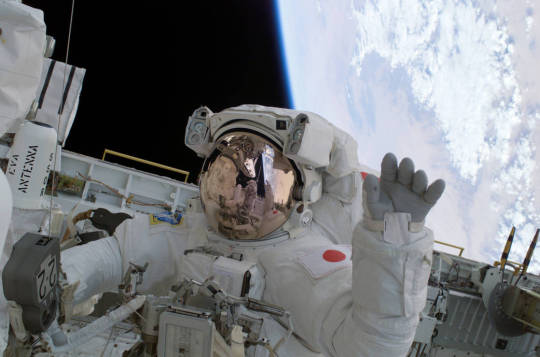
Aside from mission objectives and tasks, what’s a personal goal for this mission?
We have a lot of interesting missions to do, but my personal goal is to return home with lots of fun stories.

What was it like to get the phone call to become an astronaut?
It was 25 years ago, but I still remember the voice vividly. I got a call from Dr. Mamoru Mohri, the very first JAXA astronaut, and he said “Welcome to the Astronaut Corps.” When I got the call to be part of the Crew-1 mission, I was a lot less nervous than when I was assigned to my first mission, but the excitement remains the same.
Can you describe your crew mate Mike Hopkins in one sentence?
He is a natural leader that takes care of the team really well, and he’s fun to play around with.

Star Trek or Star Wars?
Star Wars… just because!

Can you share your favorite photo or video that you took in space?
My favorite photo is Mount Fuji because I see the mountain almost every day when I was a child. It’s definitely breathtaking to see Mount Fuji from space.
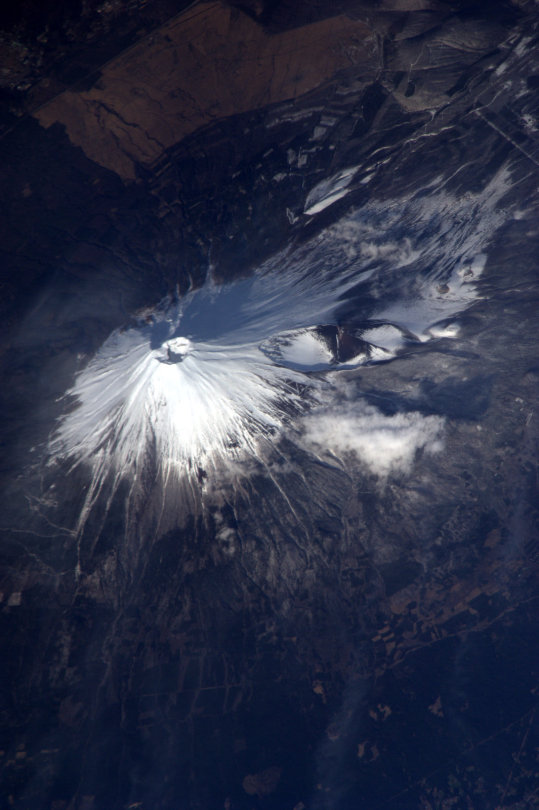
What personal items did you decide to pack for launch and why?
I have lots of family photos, and I would put it inside my sleep station. Definitely one of the most challenging things about spaceflight is not experiencing zero gravity, not the rocket, but time away from family.
How would you describe spacewalking outside the space station?
It’s an excursion. The view of the Earth is just breathtaking because you are just one glass away from the vacuum of space. There’s nothing between you and Earth.

What are you most excited about for the future of human space exploration?
I would say I’m most excited for interplanetary travel to become more common so that the school kids can go to Mars on their field trip.
What would you say to someone looking to follow in your footsteps?
Don’t worry, be happy!
How has spaceflight evolved since your first launch and stay aboard the International Space Station in 2005?
This is definitely an exciting moment. We’re starting to see more players in the game. SpaceX is the frontrunner, but soon we’ll see Boeing, Sierra Nevada and Axiom. So the International Space Station will soon have more players involved, and it will be a lot more fun!
youtube
Thank you for your time, Soichi, and good luck on your historic mission! Get to know a bit more about Soichi and his NASA astronaut crew mates Victor Glover, Michael Hopkins, and Shannon Walker in the video above.
Watch LIVE launch coverage beginning at 3:30 p.m. EST on Nov. 14 HERE.
Make sure to follow us on Tumblr for your regular dose of space: http://nasa.tumblr.com
#launchamerica#nasa#spacex#crew1#space#astronaut#science#STEM#rocket launch#rockets#astronauts#Japan#JAXA
10K notes
·
View notes